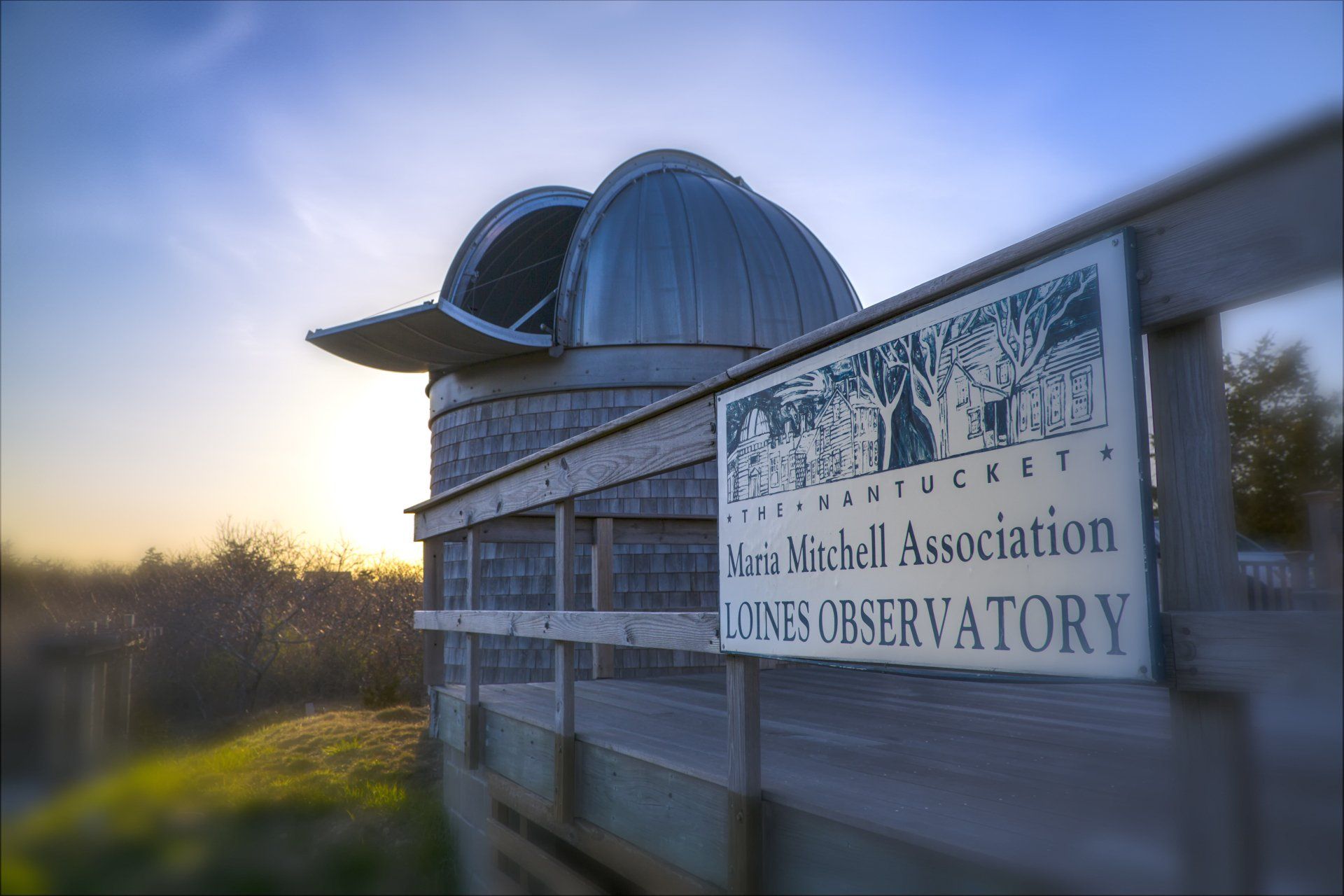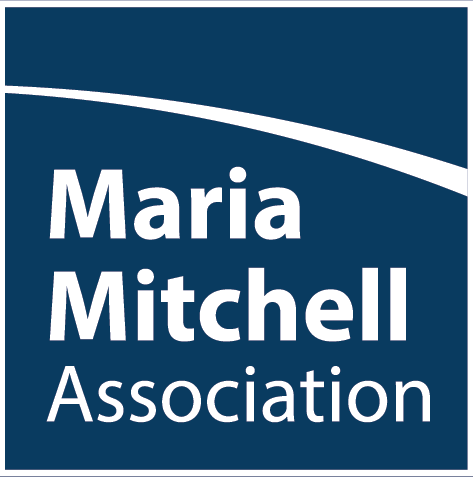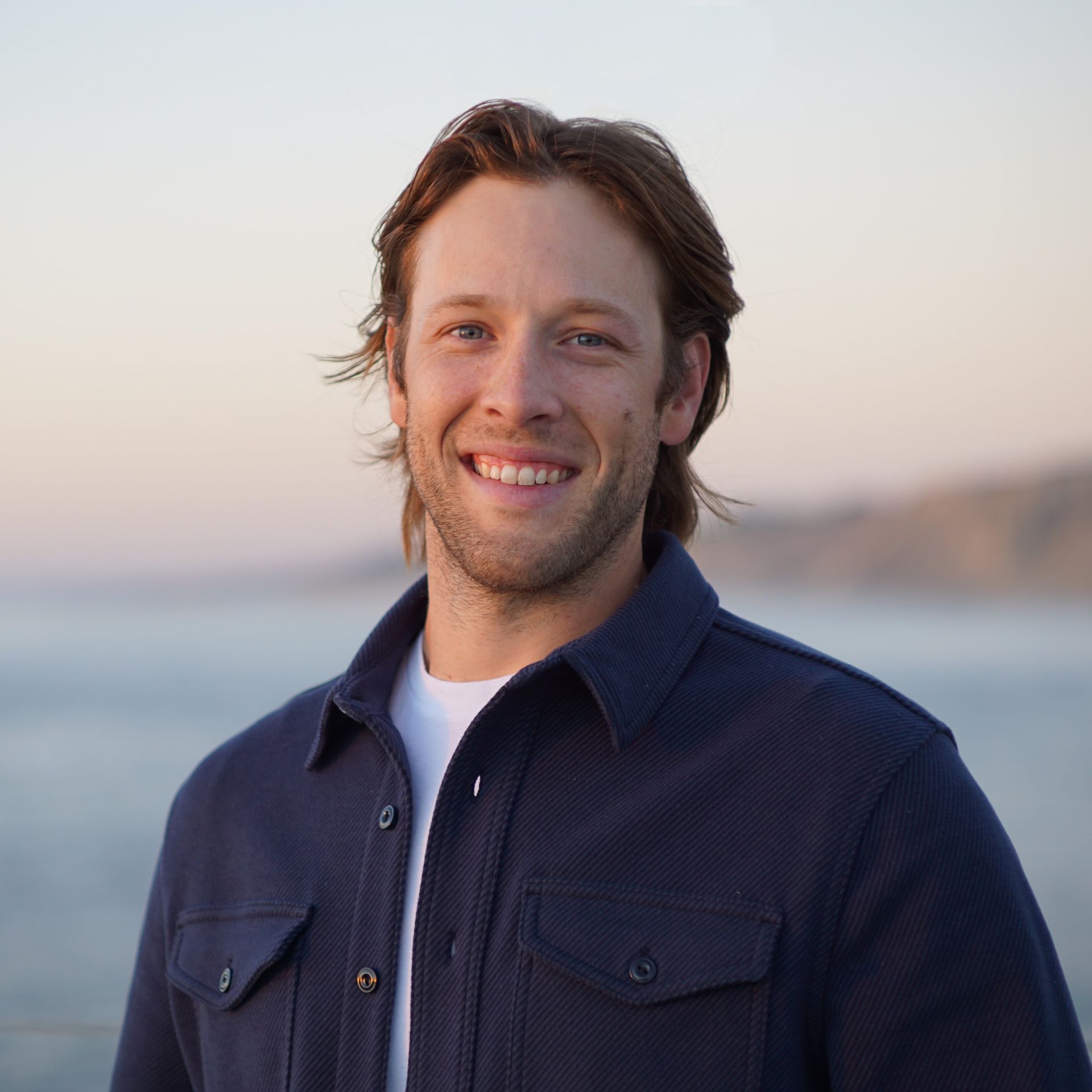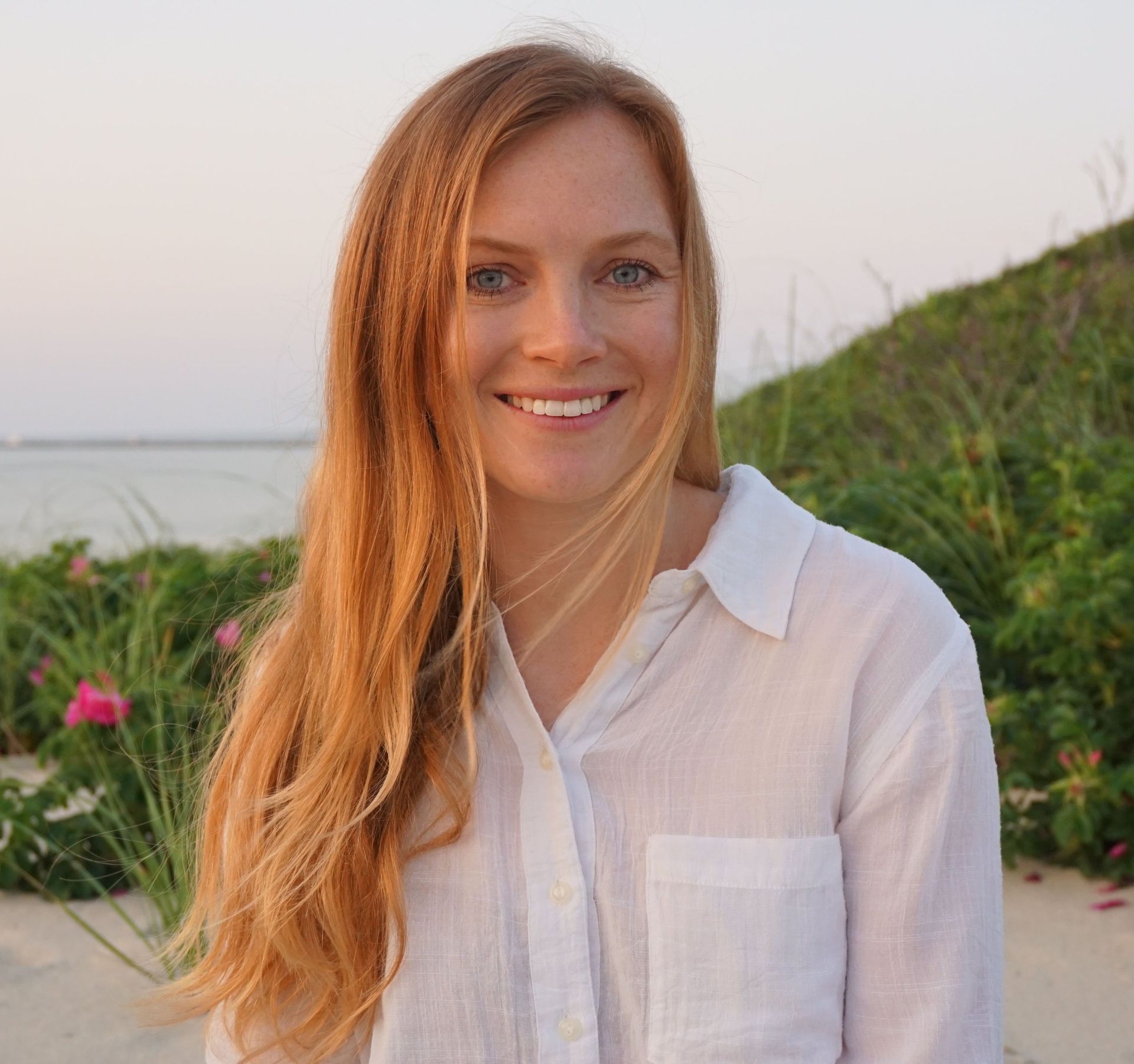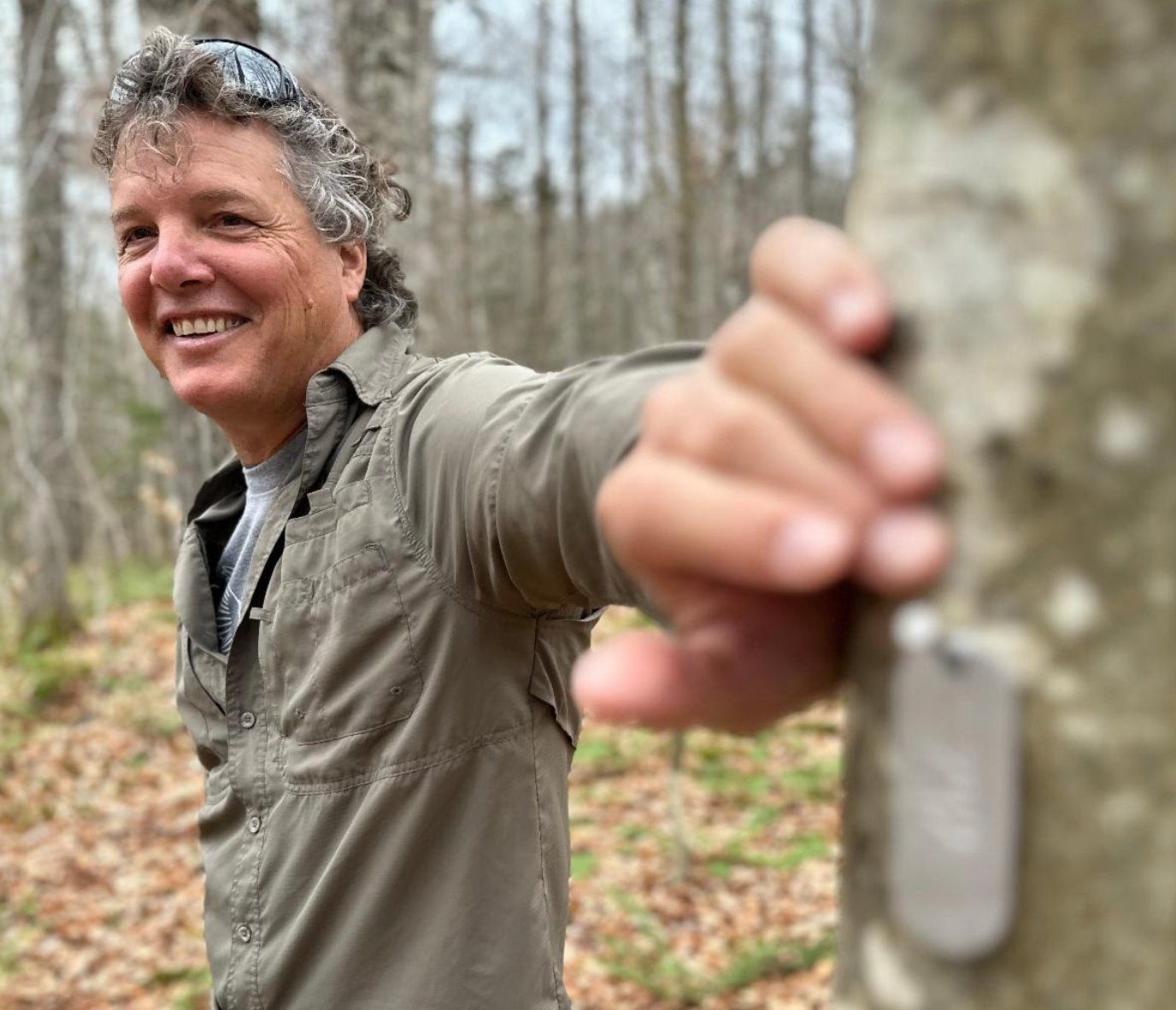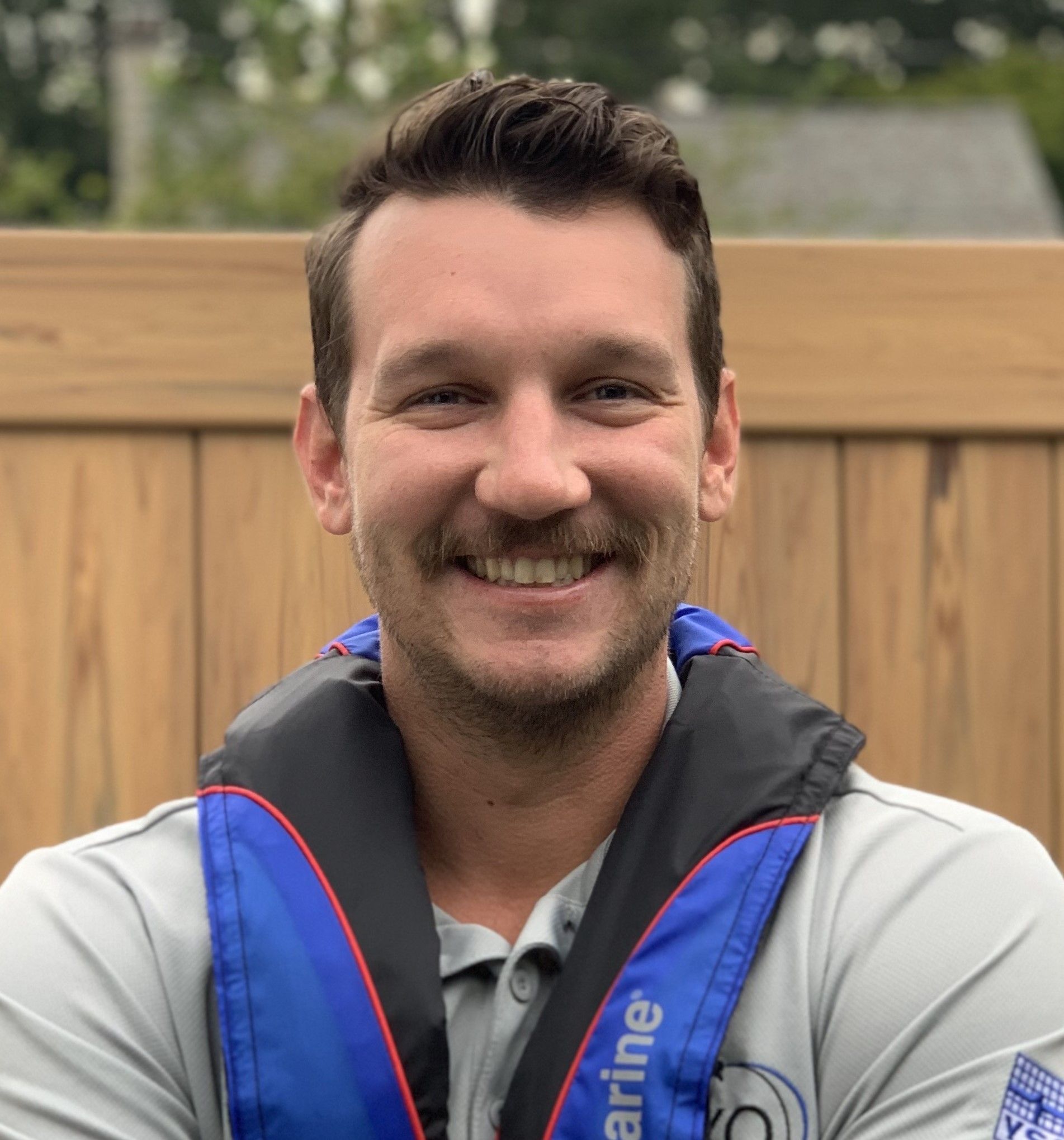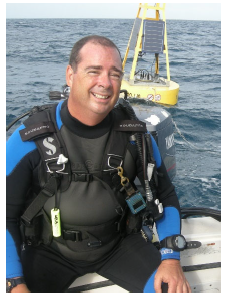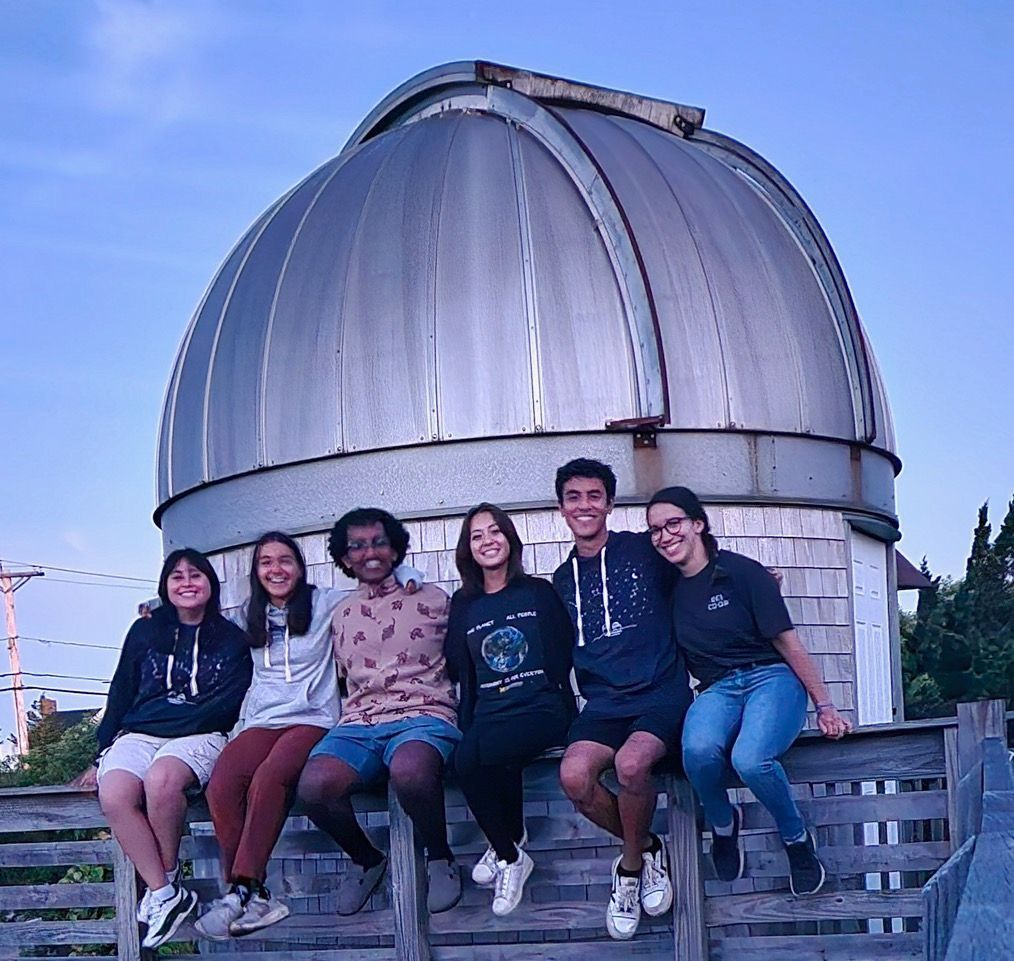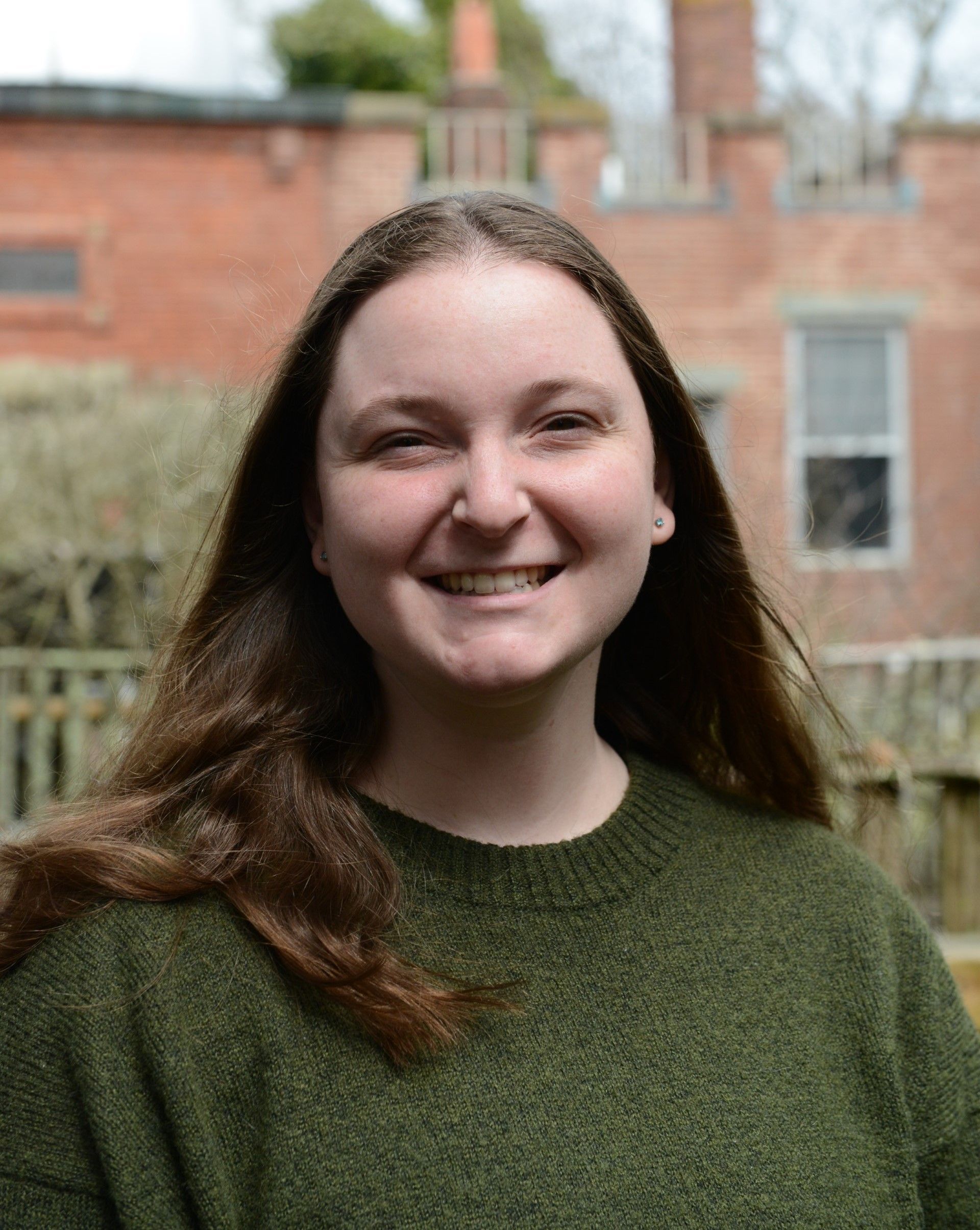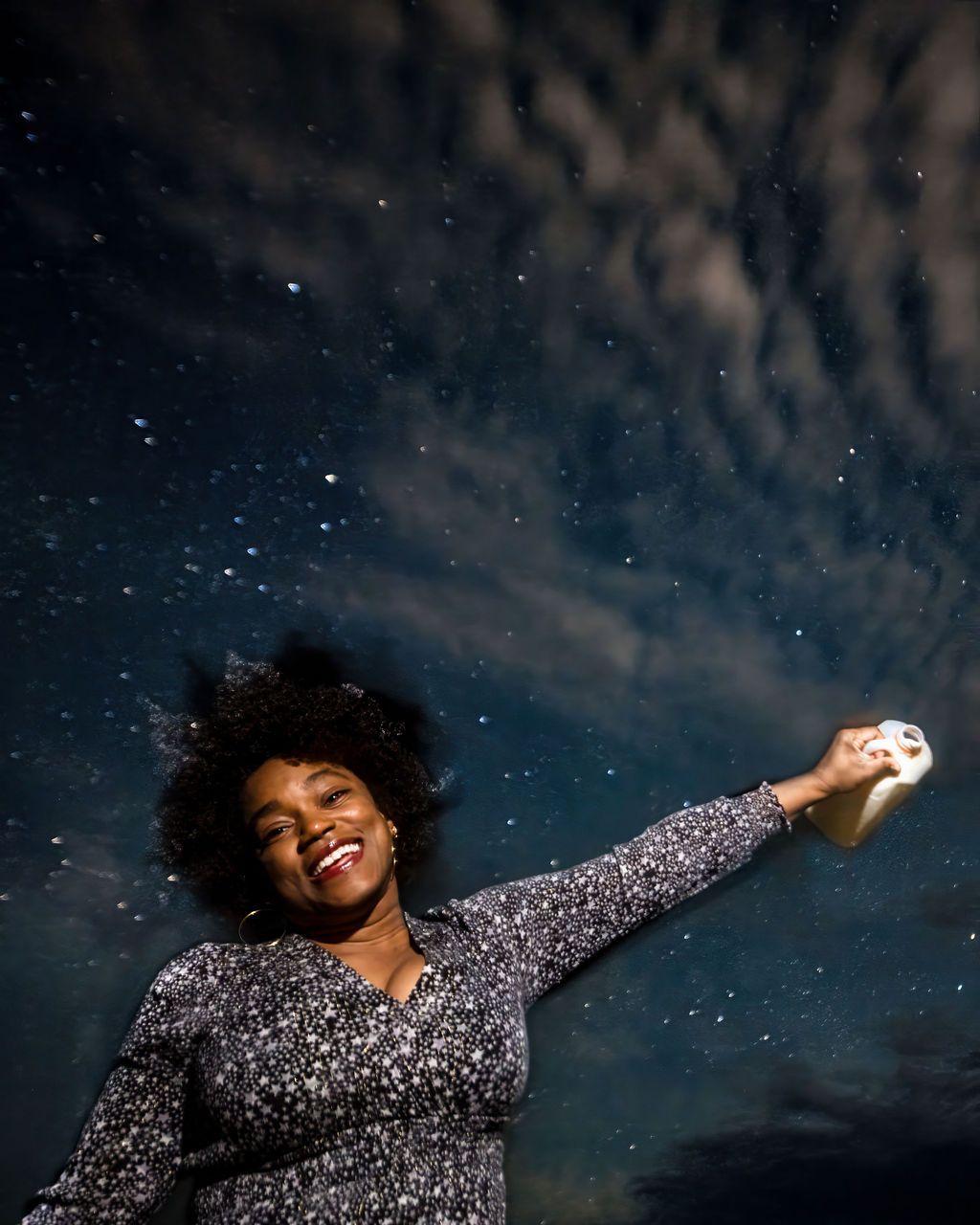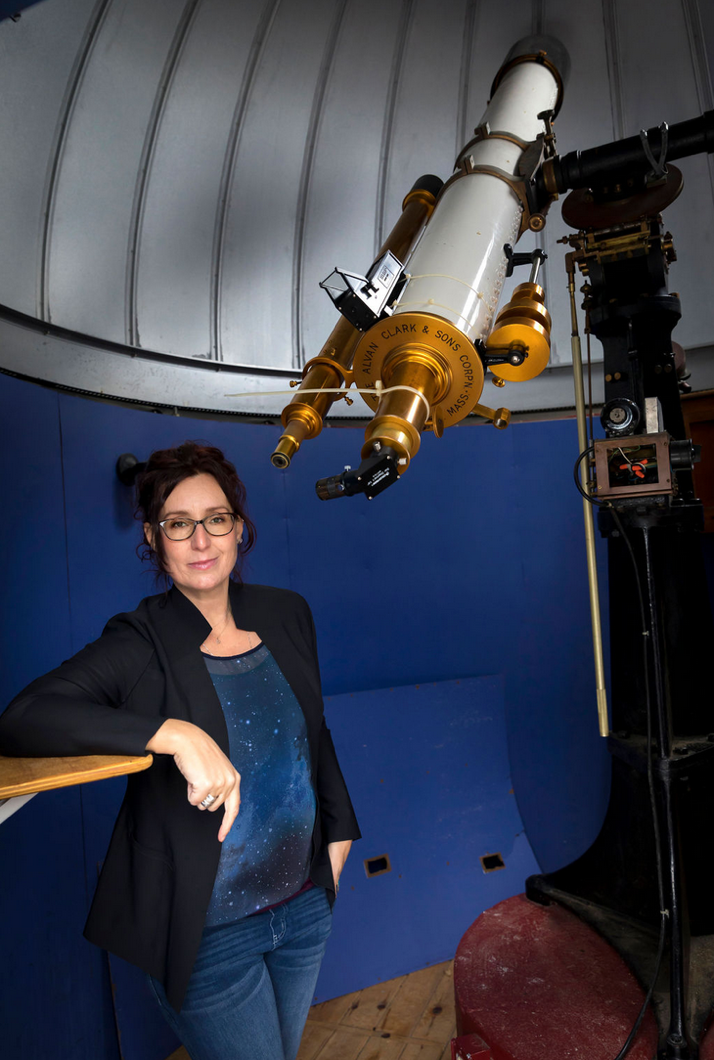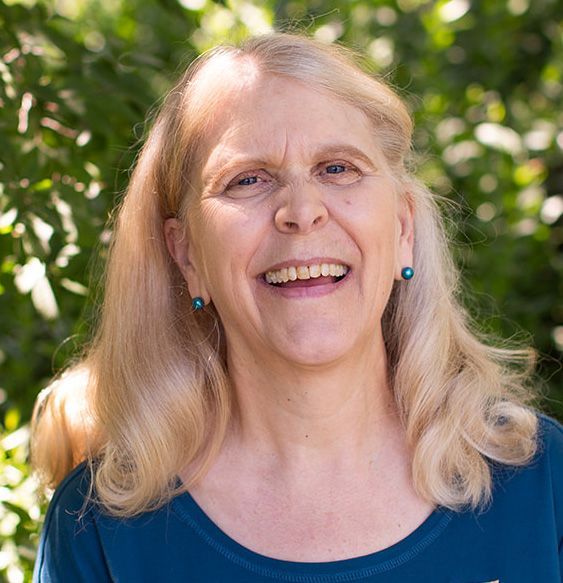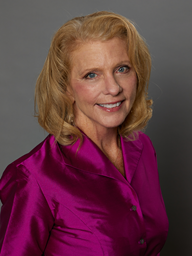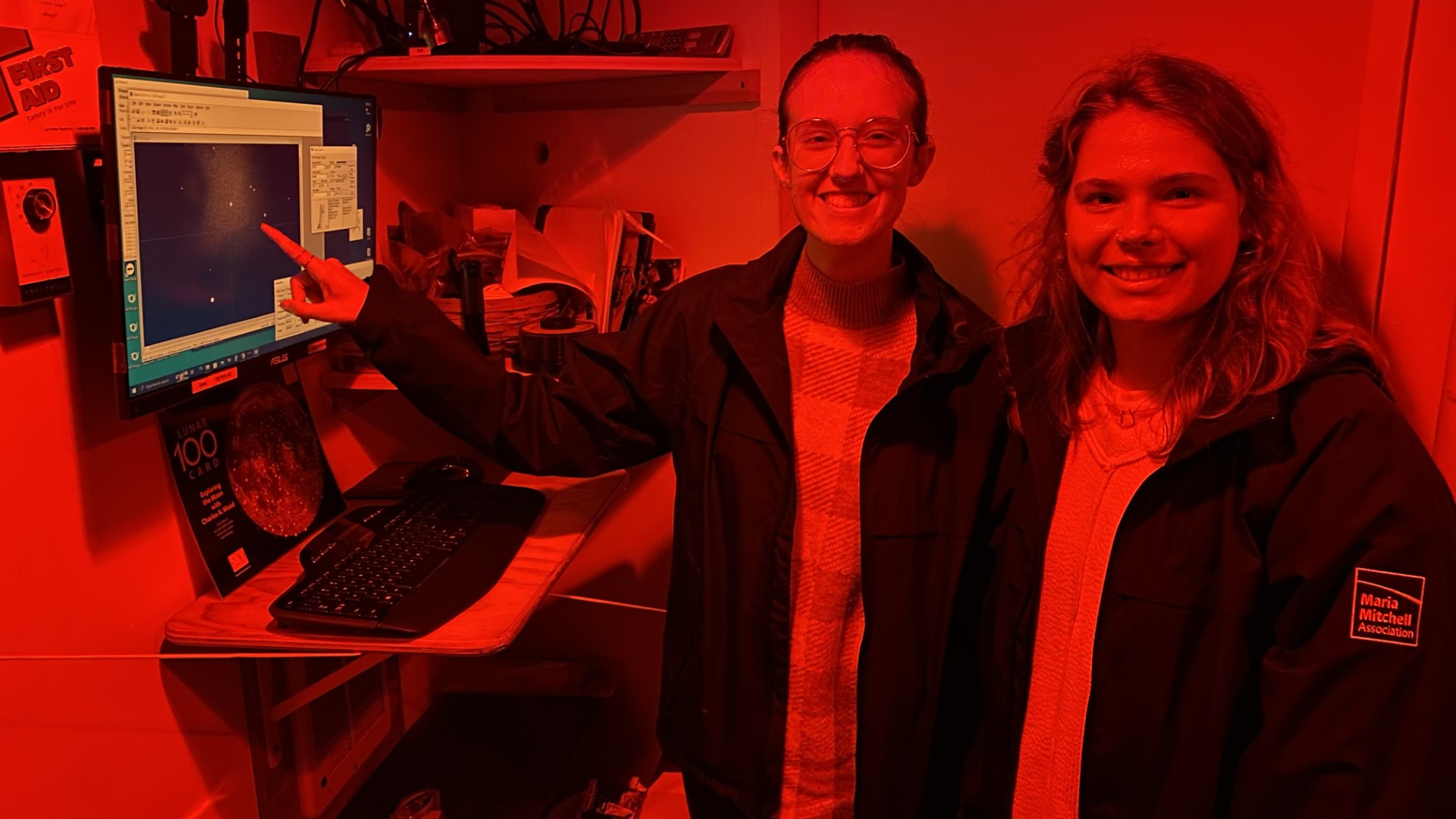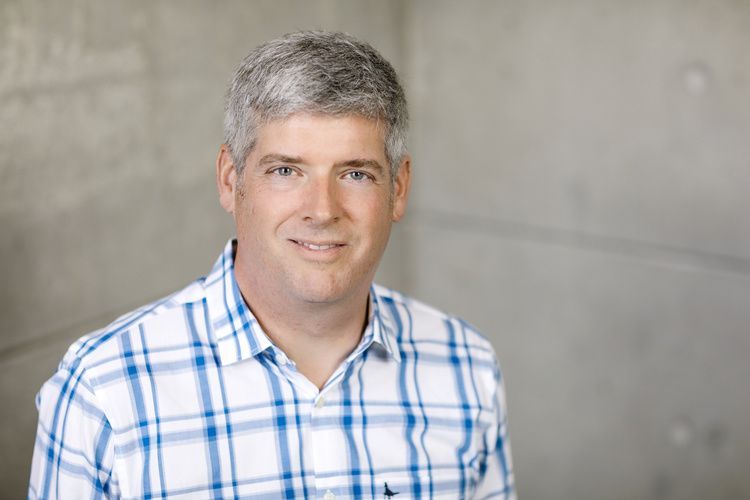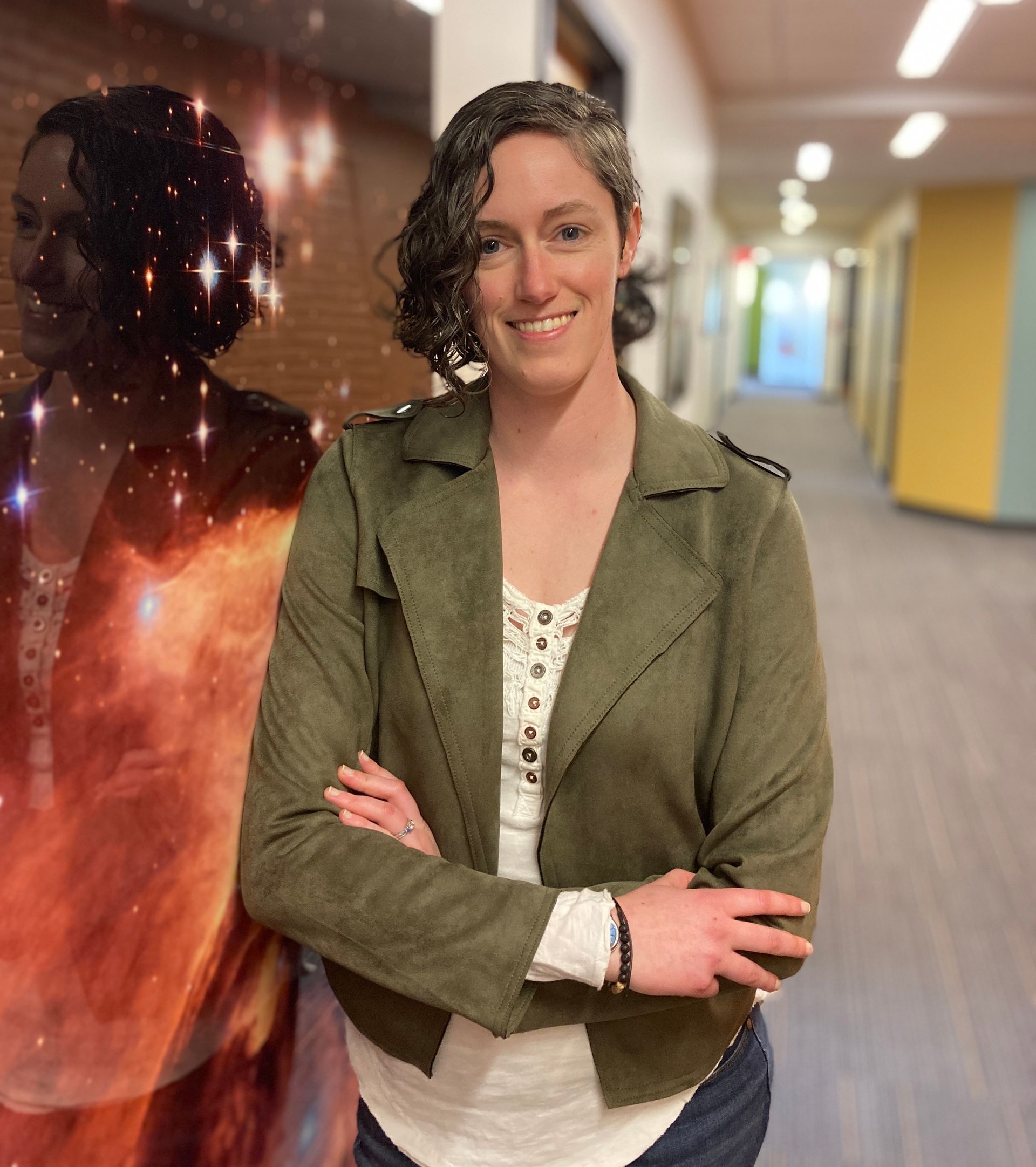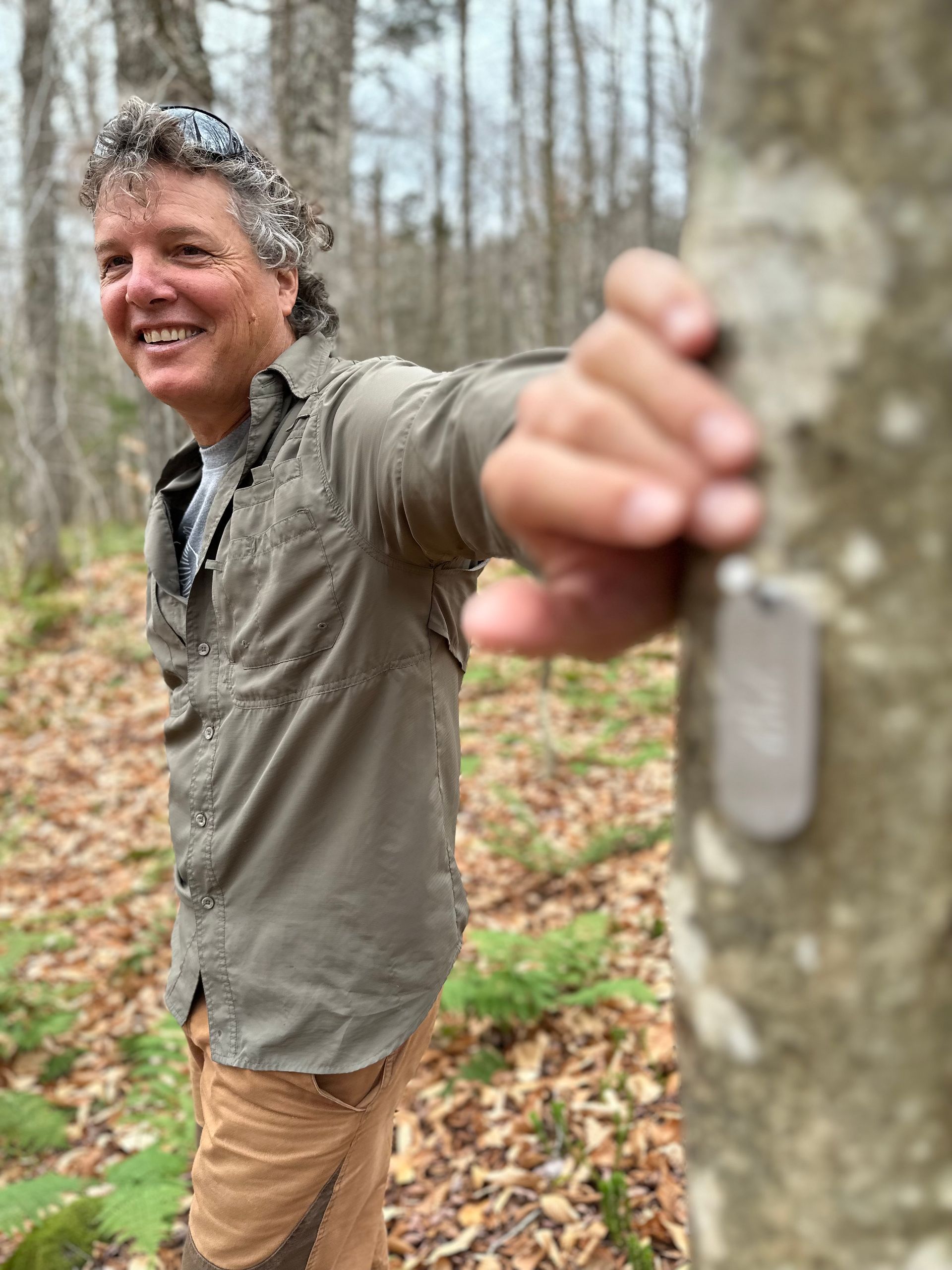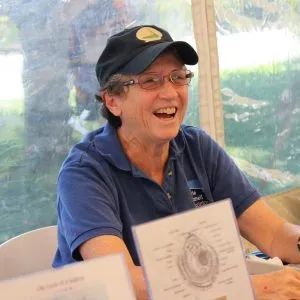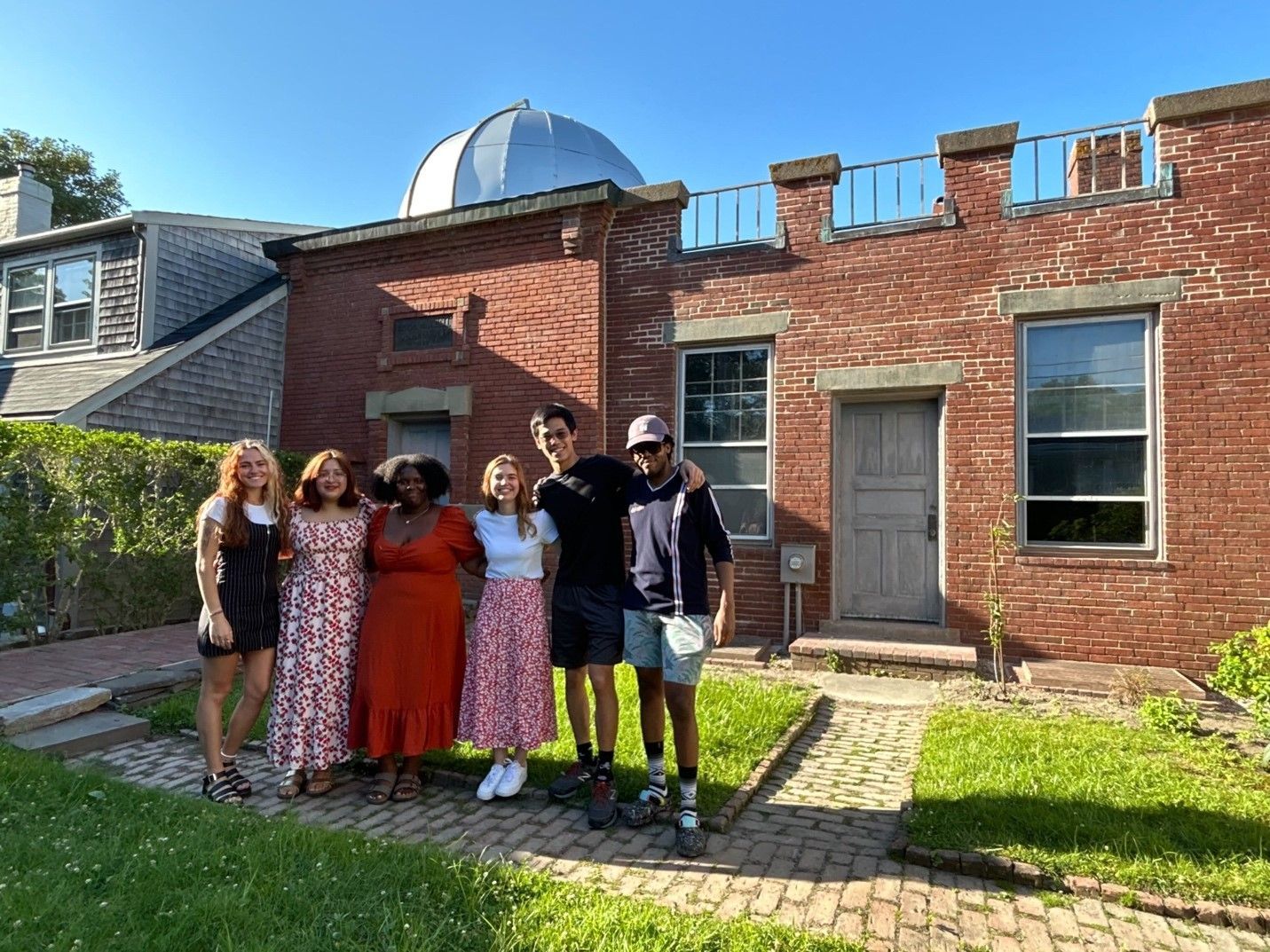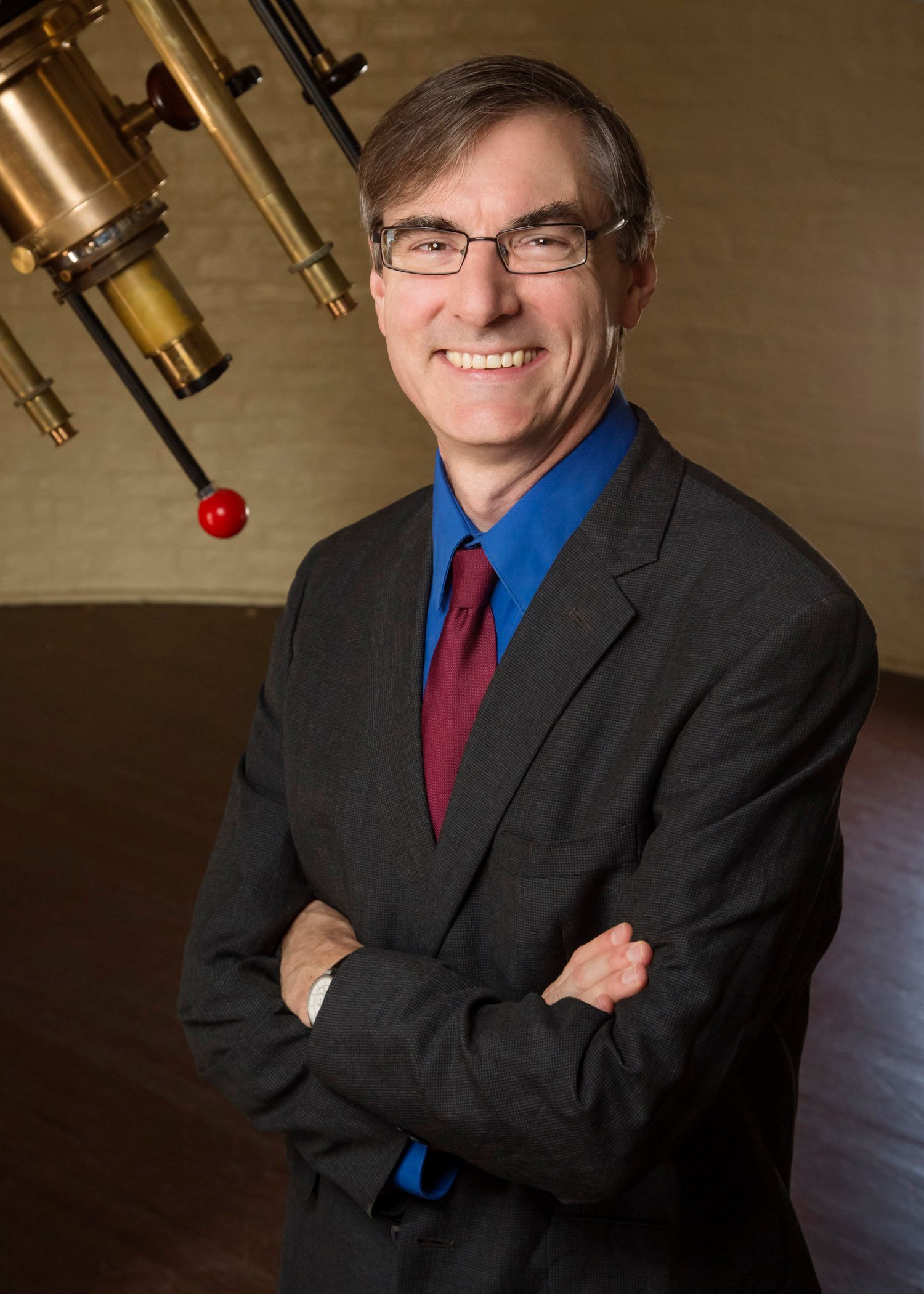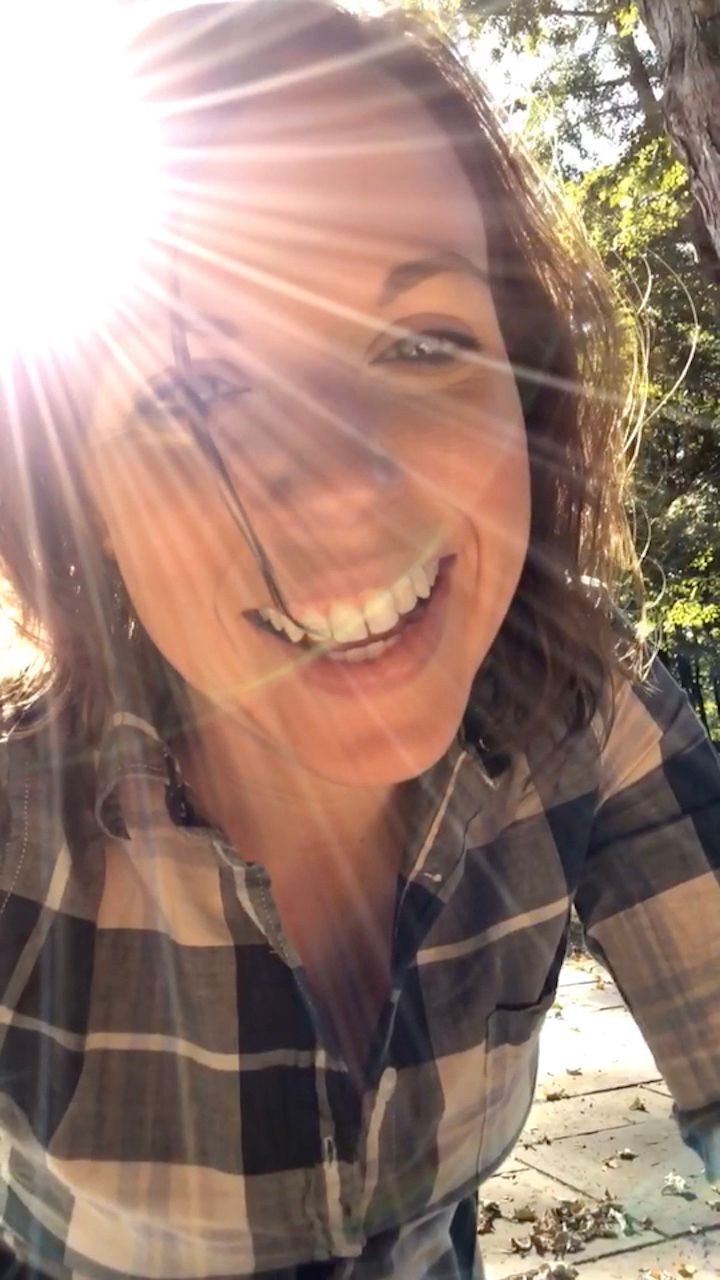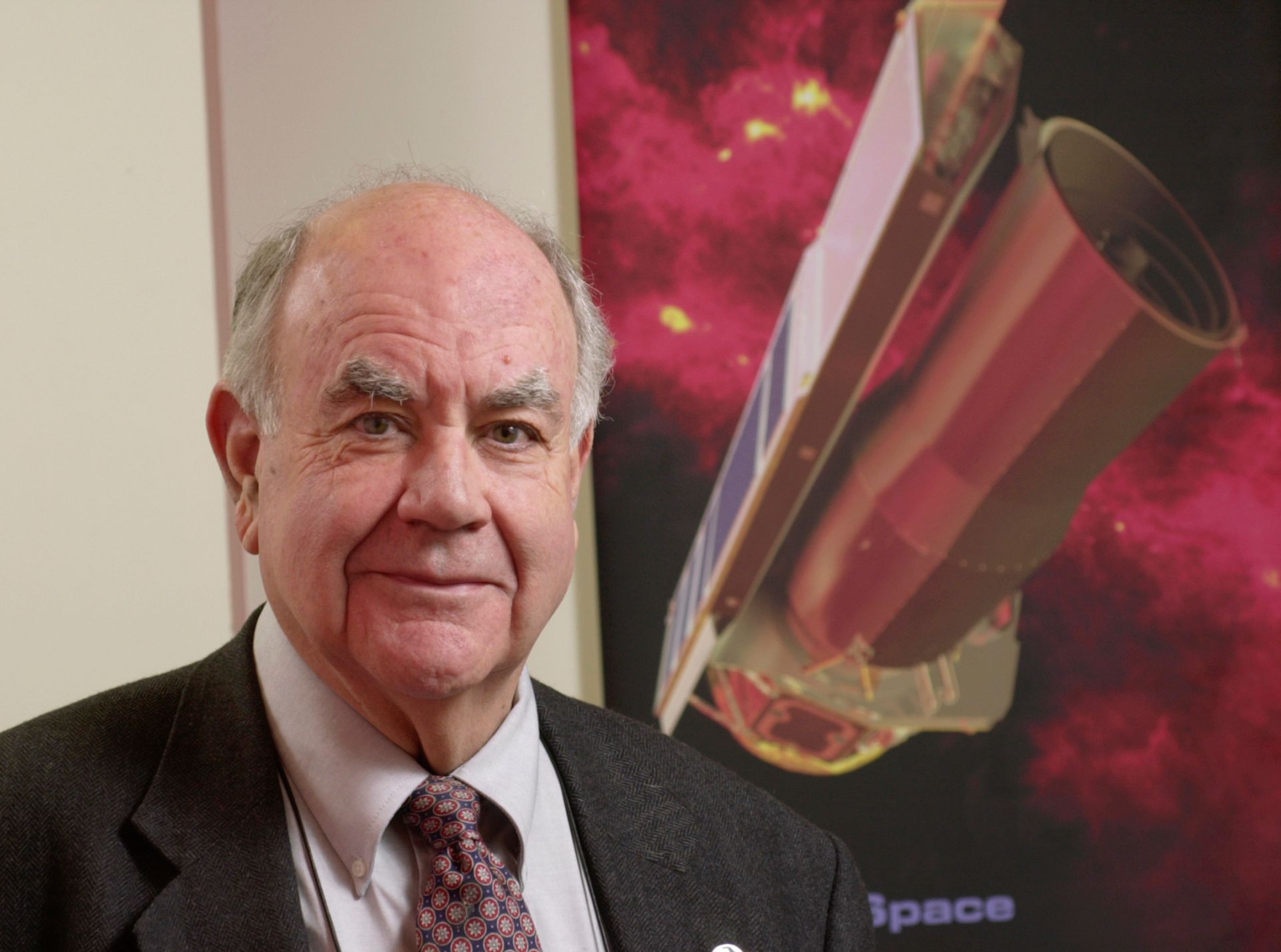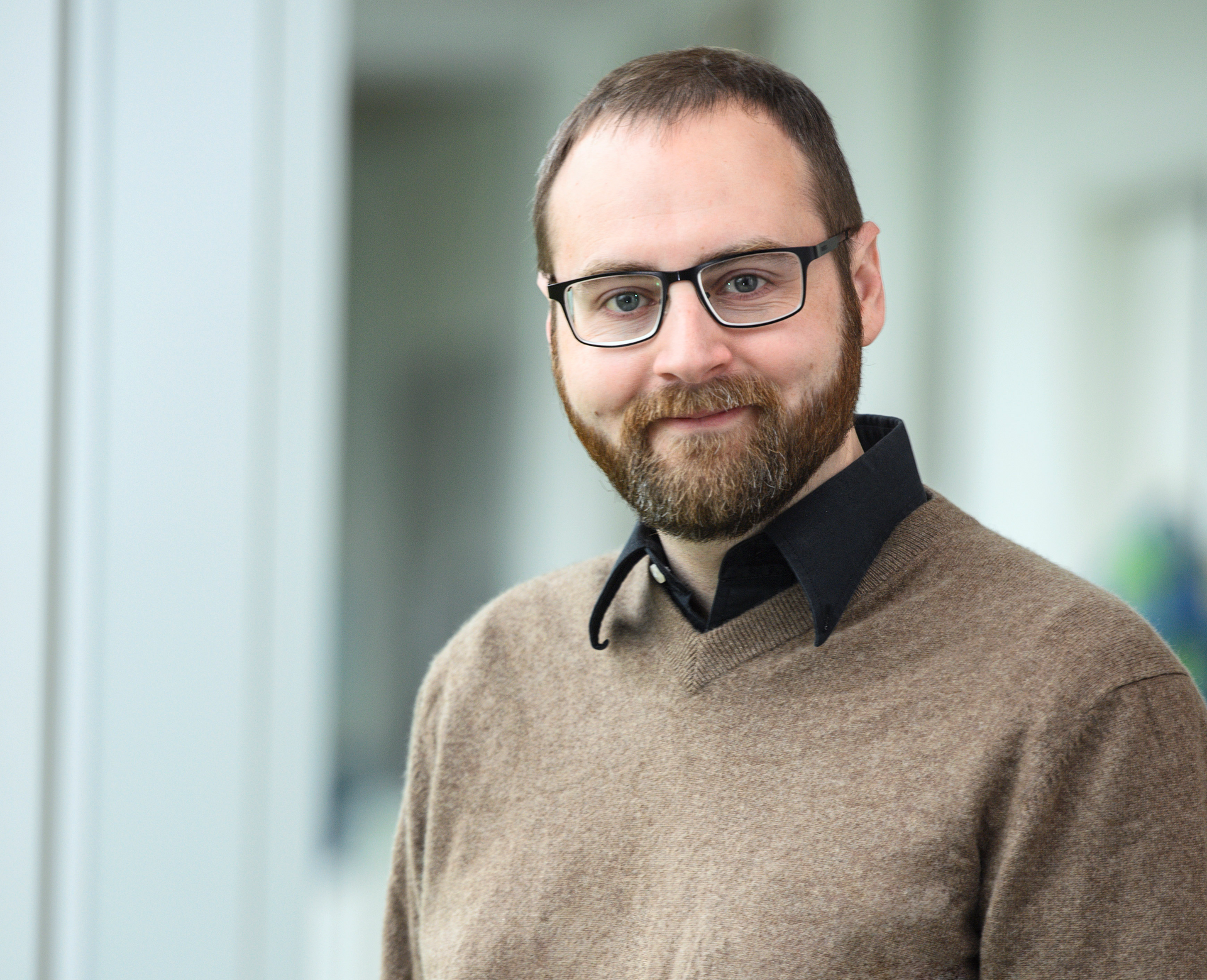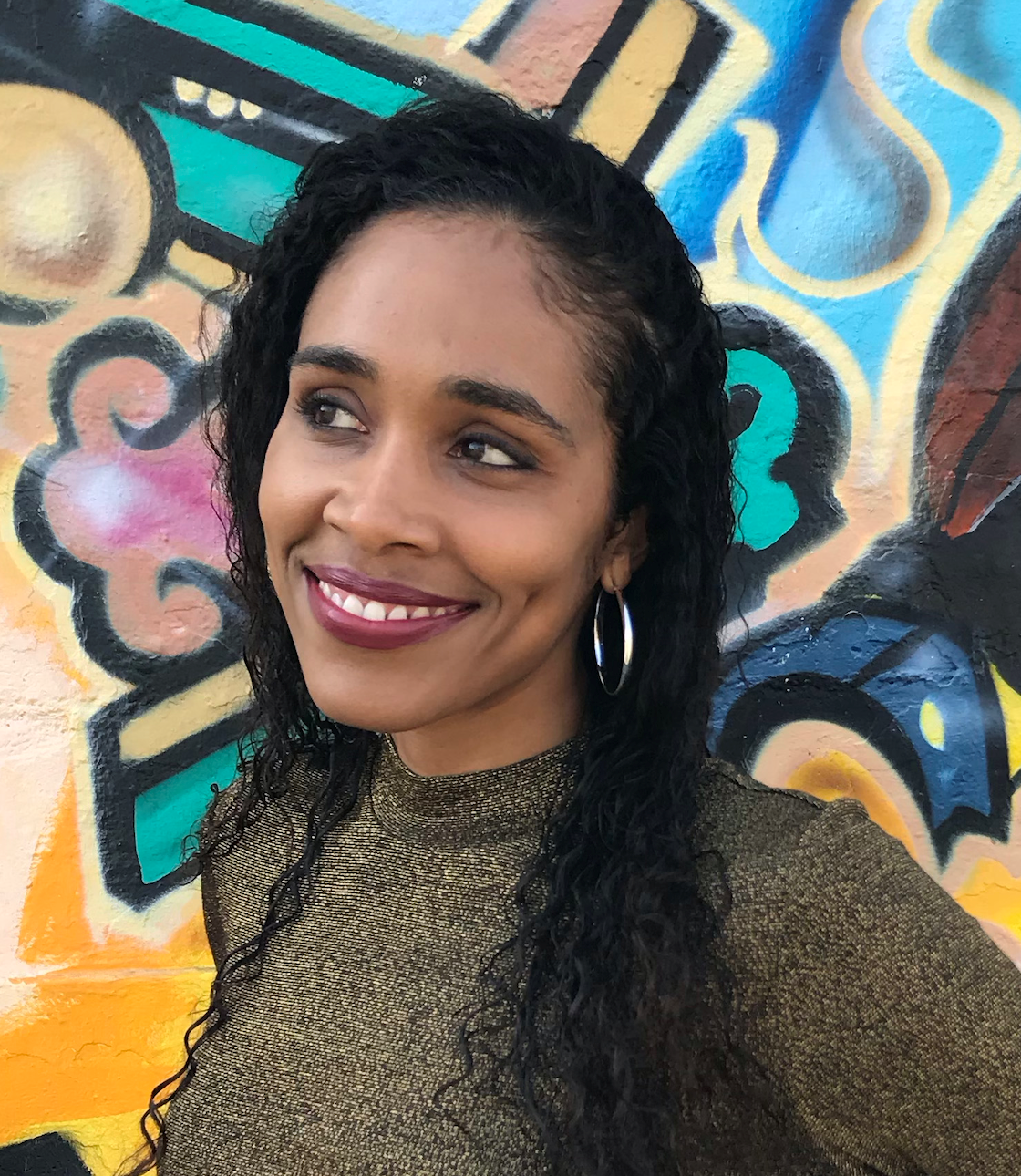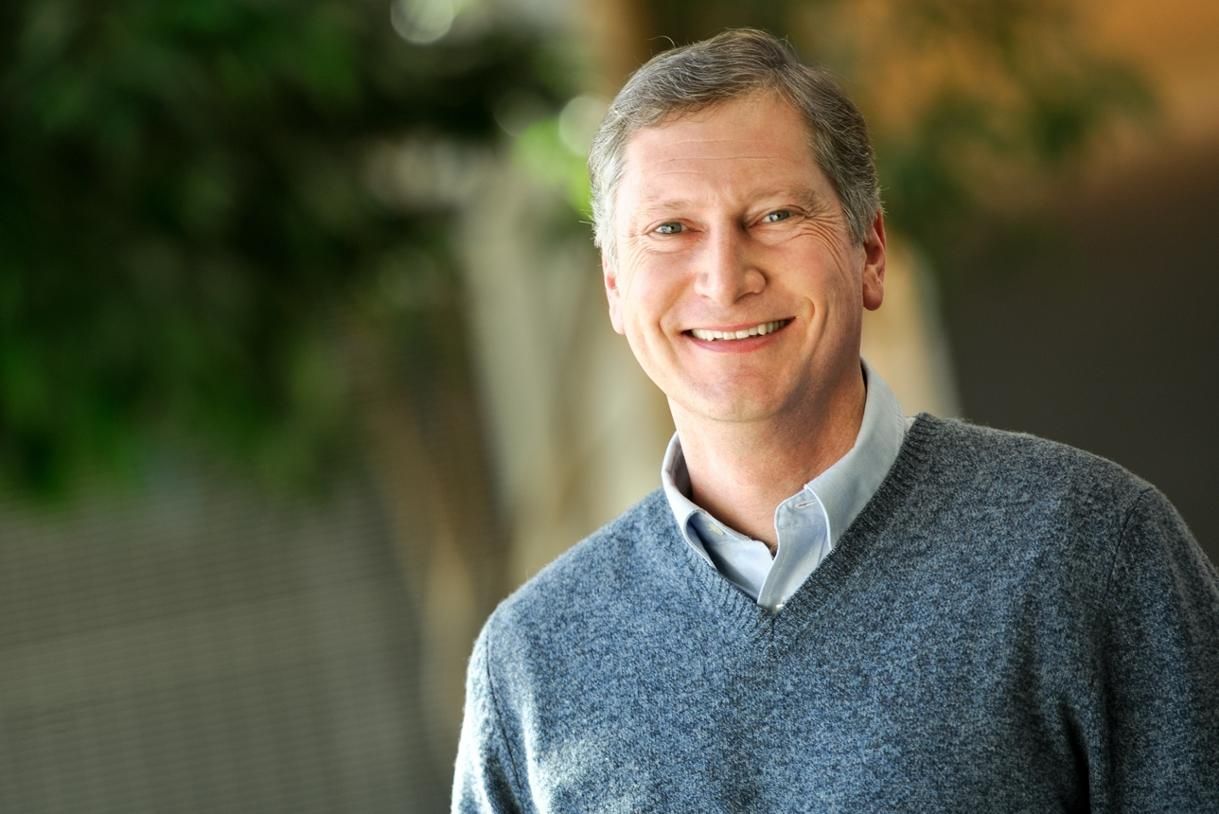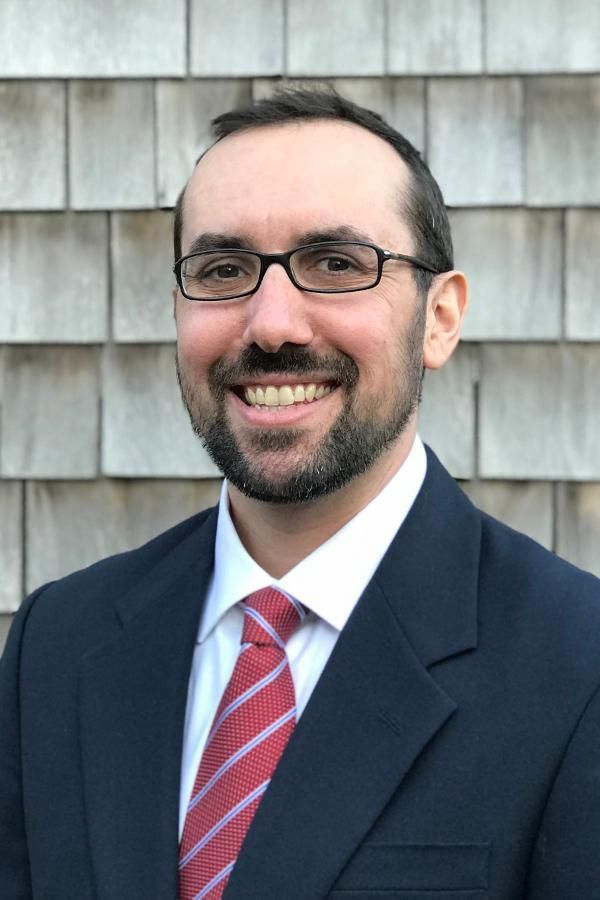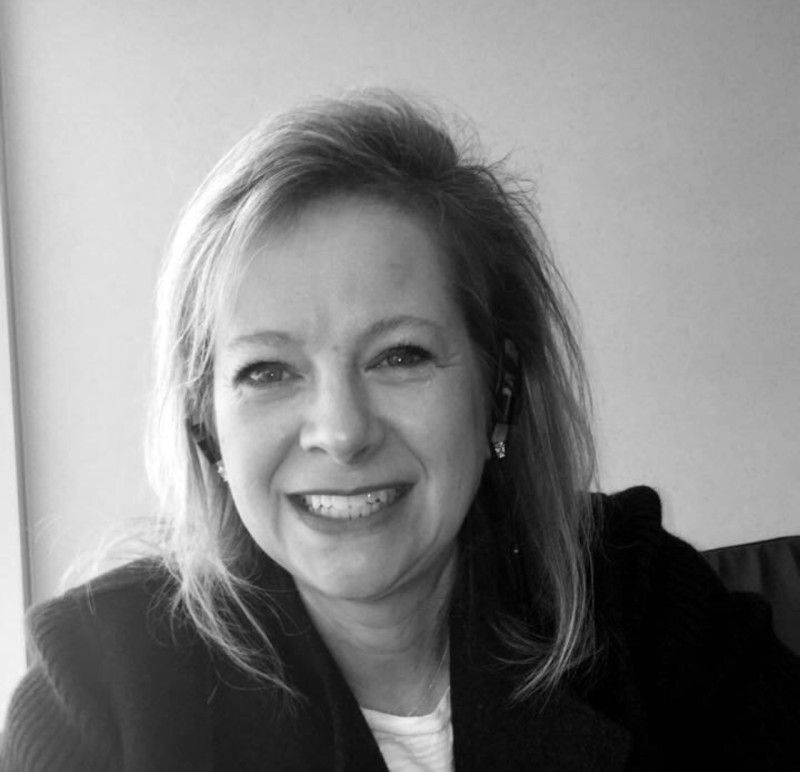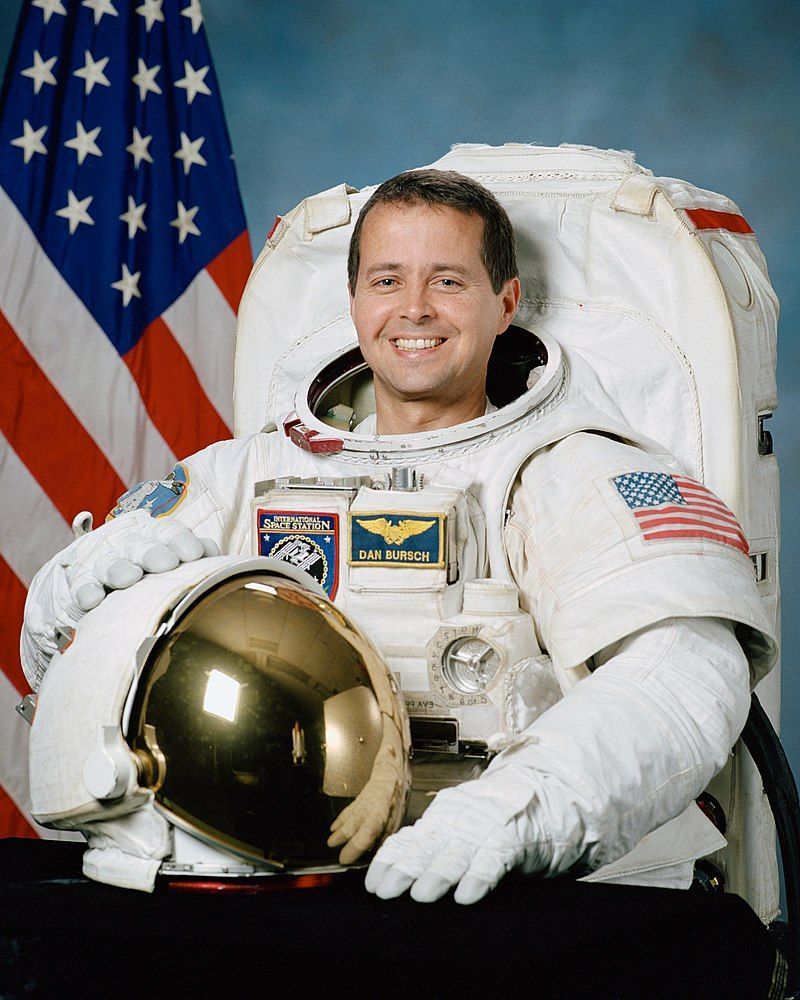Science Speaker Series
The Maria Mitchell Association is thrilled to host its annual Science Speaker Series featuring presentations from astronomers, environmentalists, biologists, professors, and other science professionals.
The Science Speaker Series is FREE to all.
2025 Presenters
Darren Humphreys &
Dr. Jackie Milingo
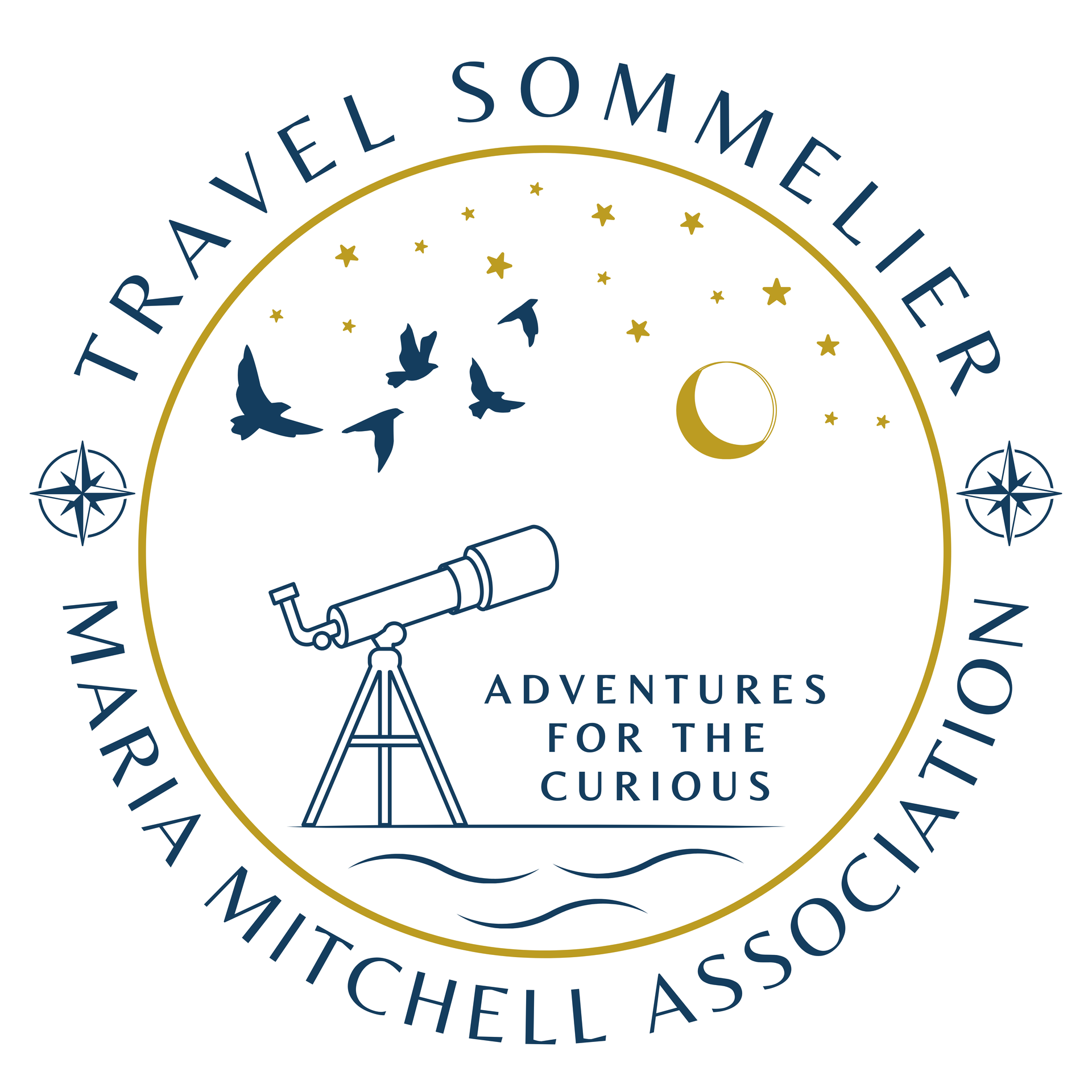
Total Solar Eclipses of 2026 & 2027: Curated Trips Inspired by Science and Wonder with Travel Sommelier and the MMA
The Maria Mitchell Association welcomes Darren Humphreys, founder and CEO of Travel Sommelier, and Dr. Jackie Milingo, MMA’s Director of Astronomy, for a captivating discussion on the upcoming total solar eclipses in Spain (2026) and Egypt (2027). Learn how Travel Sommelier and the MMA are collaborating to craft unique, curated astro-travel experiences for travelers eager to witness these extraordinary celestial events.
Humphreys will share how Travel Sommelier is designing seamless, one-of-a-kind eclipse travel experiences, crafted with precision, passion, and purpose. These itineraries include a week-long journey in northern Spain (2026) featuring Barcelona’s culinary delights and Menorca’s wellness offerings, as well as a trip along Egypt’s Nile (2027), exploring ancient temples and the storied landscapes of one of the world’s most historic civilizations.
The MMA will collaborate on these exclusive trips by providing professional astronomers to enhance the experience and offer expert insights on the celestial events, giving participants an insider’s view of these extraordinary astronomical phenomena.
This presentation offers a unique opportunity for travelers, astronomy enthusiasts, and anyone curious about the intersections of culture, history, and the cosmos to learn about once-in-a-lifetime adventures to witness these extraordinary solar eclipses.
Dr. Jackie Milingo
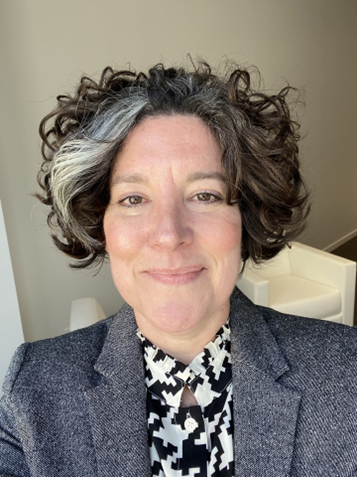
Spotted Stars and Informal STEM Learning
The Nantucket Maria Mitchell Association (MMA) announces that it will host its new Director of Astronomy, Jackie Mlingo, PhD., as a featured presenter for its October Science Speaker Series. The presentation will take place on Wednesday, October 15 at 7pm in person at the MMA Research Center, 2 Vestal Street, and via Zoom. The event is FREE to all.
Have you ever noticed the dark spots that sometimes appear on the Sun’s surface? These “sunspots” are just one example of star spots—mysterious patches that appear on stars across the galaxy. Far from being simple blemishes, star spots reveal the powerful magnetic forces at work inside stars, forces that also drive solar storms and shape the space weather that can impact entire planetary systems.
In this talk, Dr. Milingo will share her research on star spots and how she uses them as a window into teaching undergraduates the process of scientific discovery. She will also explore how science can reach far beyond the classroom—bringing STEM into everyday spaces and sparking curiosity across communities, from kindergartners to lifelong learners.
Dr. Jackie Milingo is an observational astronomer who earned B.S. degrees in Physics and Astronomy from the University of Kansas, and a Ph.D. in Astrophysics from the University of Oklahoma. Her research is currently focused on understanding magnetic activity cycles in sun-like stars through long-term studies of starpots. Dr. Milingo joins the MMA after a year-long AAAS Science and Technology Policy Fellowship at the U.S. National Science Foundation, where she was a Fellow in the Office of Legislative and Public Affairs, as well as the Astronomy Division in the Math and Physical Sciences Directorate. Before her fellowship, she was a professor in the Physics Department at Gettysburg College for over twenty years where her work included mentoring undergraduate research students.
Dr. Milingo joined the staff of the MMA in early September after a year-long, worldwide search for a new astronomer. She becomes the eighth MMA Astronomer and Director of the Astronomy Department of the MMA since Margaret Harwood, the MMA’s first astronomer, served from 1916 to 1957. Dr. Milingo has spent her career committed to generating transformative experiential learning opportunities, contributing to public education and outreach, removing barriers for students, and changing the conversation and learning spaces in astronomy, physics, and STEM in general.
James Currie
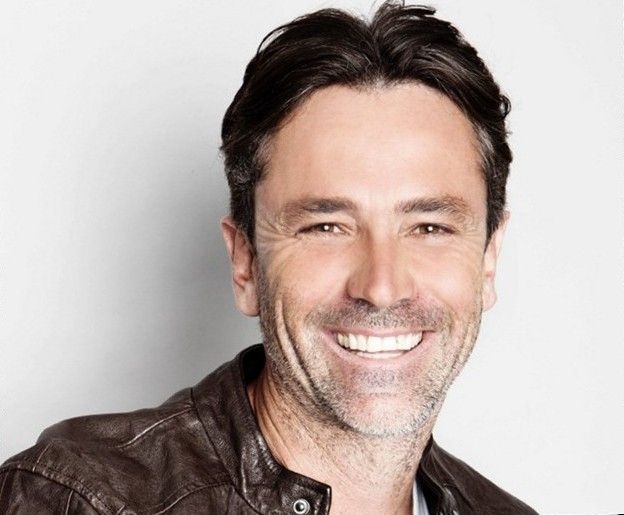
The Last of the Big Tuskers
James Currie will present an engaging discussion, “The Last of the Big Tuskers,” focused on African “super tusker” elephants. In the early 1970s, there were estimated to be 1.2 million elephants in Africa. Today, there are approximately 350,000 to 400,000. Even more alarming, is the fact that we are losing Africa’s super tuskers (those elephants with at least one tusk weighing 100 pounds or more) at an
astounding rate. Today, only about twenty remain. At the same time, entire elephant populations are increasingly becoming completely tuskless, a sort of human-induced evolution that is being fueled by the insatiable demand for ivory. Currie produced the multiple award-winning documentary on elephants “Last of the Big Tuskers “– filmed in part in 2018 at Great Plains’ ol Donyo Lodge set in Kenya’s Chyulu Hills. This fascinating presentation will give you insights into the immediate need to protect these giants of Africa through some intriguing conservation techniques.
Currie is a South African–born wildlife expert, elephant specialist, and Head of Sales & New Development for the Americas at Great Plains Conservation. A life-long conservationist, he is best known as host of “Nikon’s Birding Adventures” (ten seasons on Discovery/NBC), “A Wild Connection,” and the award-winning documentary “Last of the Big Tuskers.” He has also hosted National Geographic’s “Aerial Assassins,” appeared in “Twitchers,” and created two National Geographic video lecture series on birding and African safaris. He has led wildlife and birding tours across the globe for more than twenty years and is a highly sought after speaker, having presented at the Explorers Club in New York, the National Audubon headquarters, and international travel conferences. He is the author of When Eagles Roar and has contributed to major media outlets including, The Wall Street Journal and “Martha Stewart Radio.”
In addition to his media and guiding career, Currie holds a Master’s in Sustainable Environmental Management and has worked extensively to connect conservation with local community development in Africa. Originally from South Africa, he now lives in West Palm Beach, Florida, with his wife and three children.
James Lowenthal
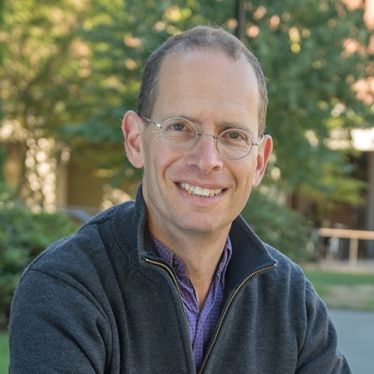

The Magic Of The Night...And How We Can Save It
Do you love seeing the Milky Way from Nantucket? Do you enjoy Nantucket's beautiful gardens by day? The naturally dark night is one of Nature's greatest gifts. Humans and all other life on Earth evolved to depend on bright days and dark nights, and for thousands of generations, humans have turned to the night sky for inspiration, connection to our ancestors and culture, religion, science, and awe. Pollinators, migrating birds, marine life, and plants all need natural darkness at night to thrive.
In collaboration with the MMA and Nantucket Lights, join Smith College Professor of Astronomy, James Lowenthal on an illustrated tour of the magic of the night and learn how, together, we can preserve that night magic by taming the growing threat of light pollution – a global problem with a local solution.
James Lowenthal is the Mary Elizabeth Moses Professor of Astronomy at Smith College in Northampton, Massachusetts. He received his BS in Physics and Astronomy from Yale and his PhD in Astronomy from the University of Arizona. He studies the formation and evolution of galaxies, especially actively star-forming galaxies. He leads the local advocacy group Northampton City Lights and the Massachusetts chapter of DarkSky International; chairs the Light Pollution Sub-Committee of the American Astronomical Society’s Committee for the Protection of Astronomy and the Space Environment; and is President of the International Astronomical Union's Commission on Site Protection (i.e., light pollution). He spends as much time outdoors under the night sky as he can.
MMA NSF-REU Astronomy Interns
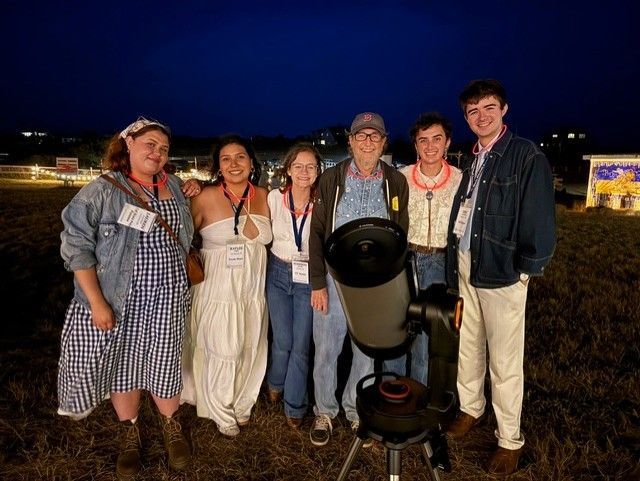
Please join us in person or online via Zoom for a very special presentation of this summer’s astronomy research from MMA's 2025 NSF-REU interns. The MMA’s National Science Foundation Research Experiences for Undergraduates (NSF-REU) interns will present their fascinating research to the public.
Madison Gerard (University of Texas at Austin): "How Low Can You Glow? Analyzing the Low-Luminosity SN IIP 2024abfl"
Kaylee Perez (Texas State University): "How Dust Changes the Light We See: Exploring the link between dust extinction and attenuation with simulated data"
Lauren Barkey (Cal Poly Pomona): "Peek-a-boo!: Exploring the NEOWISE Lightcurves of R Coronae Borealis Variable Stars"
Aiden Agostinelli (University of Montana) and Ben Radmore (University of Michigan): "When the Dust Settles: Late-Time Infrared Imaging of SN 2011ja"
The MMA’s Maria Mitchell Observatory operates the NSF-REU program each summer and has done so for decades. The program, funded by a generous grant from the National Science Foundation, allows the MMA to bring six top undergraduate students to the MMA each summer who are selected out of a pool of approximately 380 applicants from around the United States.
Kike Calvo
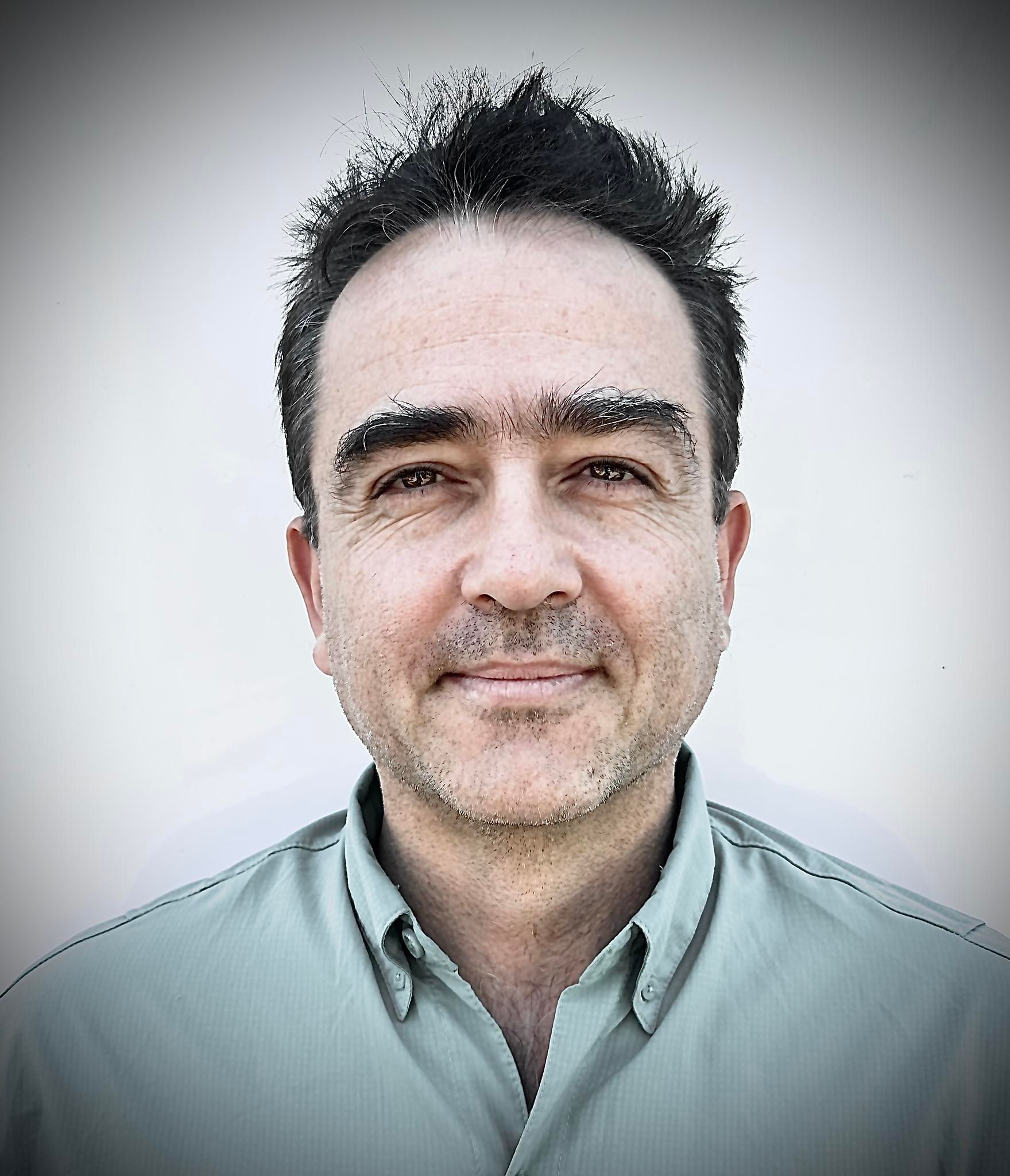
The Power of Creativity: A Journey Through Storytelling, Exploration, and Hope.
Award-winning photographer, journalist, and author Kike Calvo (Kee-Keh) is renowned for his extraordinary ability to bridge culture, environment, and visual storytelling. A Fellow of the Explorers Club and a Fellow of the Royal Geographical Society, he has traveled to over 120 countries, capturing everything from belugas in the Arctic to traditional dances in Vanuatu. His work has been featured in National Geographic Magazine, The New York Times, Rolling Stone, and more.
In this engaging presentation, he explores how creativity can be a catalyst for connection, storytelling, and meaningful change. From documenting remote villages to diving with great white sharks, from defying the odds as an author to inspiring thousands of children in the Amazon, Kike shares the invaluable lessons he has learned along the way.
As a National Geographic Certified Educator and Safina Center Fellow (2020-2023), Kike combines his passion for photography with teaching, having lectured at prestigious institutions like Yale University. A pioneer in drone photography for art and conservation, he founded the Little Explorer, Big World initiative, which brings education to remote communities and has donated over 35,000 bilingual books.
Described by anthropologist Wade Davis as "a fresh voice in visual anthropology," Kike has a gift for capturing the intersections of human existence.
Kike’s new book, Luminous: A Field Guide for Visual Explorers and Storytellers, isn’t just a book—it’s an invitation to slow down, look deeper, and photograph with soul. It’s a roadmap where photography meets presence, anthropology meets art, and storytelling becomes a path to connection.
Discover how creativity can illuminate pressing global issues—such as plastic pollution—and empower each of us to make a difference.
July 23
The Nantucket Atheneum's
Great Hall
7:00 PM - 8:00 PM EST
Denice Kronau

Inspired by the history and nature of Nantucket, Denice Kronau will take the audience on her journey to publishing her first two novels in her "Stars" series, and the unexpected lessons she learned along the way. Kronau will talk about the themes that were true in the 1800s and today: the importance of deep connections, resilience, living with uncertainty and leading with confidence in an unpredictable world.
A seasoned executive and former Chief Diversity Officer with over thirty-five years in global leadership roles, Kronau has now turned to fiction. Her "Stars" series blends meticulous historical research with parallel love stories set across centuries in Massachusetts.
In The World is Decorated With Stars and The Stars That Guide Us, she explores how lessons from the past—on love, loss, and identity—still resonate today. Join her for an inspiring conversation on writing, reinvention, and the power of purpose.
This event is free and in-person. Space is limited, pre-registration is required.
July 16
Vestal Street
Observatory
7:00 PM - 8:00 PM EST
Travel Sommelier

Join the MMA and Darren Humphreys, founder and CEO of Travel Sommelier, for an inspiring conversation about the art of transformative travel. Discover how his award-winning boutique travel company crafts seamless, one-of-a-kind itineraries to some of the world’s most captivating destinations—each experience tailored with precision, passion, and purpose.
After a successful career on Wall Street, Humphreys followed his true calling and founded Travel Sommelier, fueled by a deep-rooted wanderlust and a desire to share the power of meaningful travel. He takes pride in curating journeys that do more than check boxes—they change lives. Humphreys strongly believes in having fun along the way and finds gratitude in finding close friendships among his trusted partners and curious clients.
Having explored over ninety countries across every continent, Humphreys continues to find magic in every destination—immersing himself in new cultures, complex histories, and unforgettable culinary and wine experiences. From introducing travelers to his native South Africa to uncovering hidden gems around the globe, he invites you to see the world through a richer, more personal lens. Join him and his team as they reveal the thoughtful process behind Travel Sommelier’s approach—and prepare to be inspired.
When Humphreys is not traveling, he resides in Duxbury, a seaside town in Massachusetts with his wife Caitlin, his two energetic boys, and his sweet black lab.
June 18
on Zoom
7:00 PM - 8:00 PM EST
Rich Sotell, CFP:
The History of Tariffs and Taxation
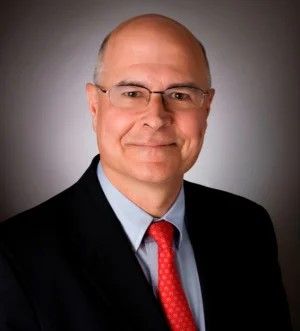
Join the MMA and financial expert and top 401(k) advisor, Rich Sotell, for a discussion on the history of tariffs and taxation. Taxes and tariffs have played a major role in shaping nations. In America, British taxes and tariffs on goods like tea and paper helped spark the American Revolution. Later, U.S. tariffs were used to protect young industries from European competition. Today, taxes fund public services such as education, healthcare, and infrastructure, while tariffs are still used strategically—sometimes to encourage domestic production, other times as tools in international negotiations. Rich Sotell will discuss in detail how taxes and tariffs began and their relationship to our global economy.
Sotell has been involved in the financial industry since 1975 and is a founder of the Kraematon Group and is responsible for the operations of the 401(k) division. He has developed marketing programs for both banks and mutual fund companies in the areas of IRA and 401(k). Sotell is a tax law expert concerning distributions from qualified retirement plans and IRA’s. He has lectured on these subjects to insurance company executives, on radio, and at several professional education programs. Sotell is currently a contributing member to several high level 401(k) advisory boards in the mutual fund and payroll industries. He was named by the Financial Times as a 2015 and 2016 “Top 401 Retirement Advisor,” a list of 401 elite professionals specializing in U.S. defined contribution plans.
Sotell earned a Bachelor of Arts degree from Colgate University in 1975. His professional designations include Certified Financial Planner (CFP), Investment Company/Variable Contracts – Series 6 Registration, and a Uniform Security Agent – Series 63 Registration.
The Kraematon Group is a leading 401(k) consulting firm headquartered in Wellesley, MA. In addition to providing 401(k) consulting services to Allied American Insurance Agency and its former parent Arbella Insurance, Kraematon consults with over 3% of all Massachusetts based public companies regarding their 401(k) plans.
Anya Freeman of KindDesigns:
3-D Printing Living Walls

KindDesigns was founded to protect Miami’s coastlines by combating the destructive flooding and degrading of marine habitats happening in Freeman’s home state. Freeman put together a team of engineers, designers, researchers, and materials experts to develop sustainable, cost-effective solutions that could be scaled to all coastal cities.
Join Freeman as she discusses her flagship product, 3D- Printing Living Seawalls™, which tackles the challenges posed by rising sea levels while healing damaged ecosystems. Everything KindDesigns does is driven by their unwavering commitment to create resilient communities.
These Seawalls are structurally identical to traditional concrete seawall systems, but also function like artificial reefs, dissipating waves and improving water quality. KindDesigns installed the world’s first 3D-Printed Seawall in Miami in May 2024 and has since printed seawalls across coastal cities, and won both US Air Force and US Navy grants to bring the solution to coastal bases.
Originally from Ukraine, Anya, together with her family, has lived in Israel, South Africa, and China before settling in Miami to attend law school. Anya worked for the US Attorney's Office of Miami/Fort Lauderdale and clerked at the United States District Court in central California before opening her own law firm focused on environmental policy. Frustrated with a lack of innovation around rising sea-levels which threaten Miami, Anya took on the challenge of finding technological solutions to this global challenge that both supports the environment and has economies of scale.
Charles Johnson, Emma Morgan, Dr. Rich Blundell,
RJ Turcotte, & Tara Riley
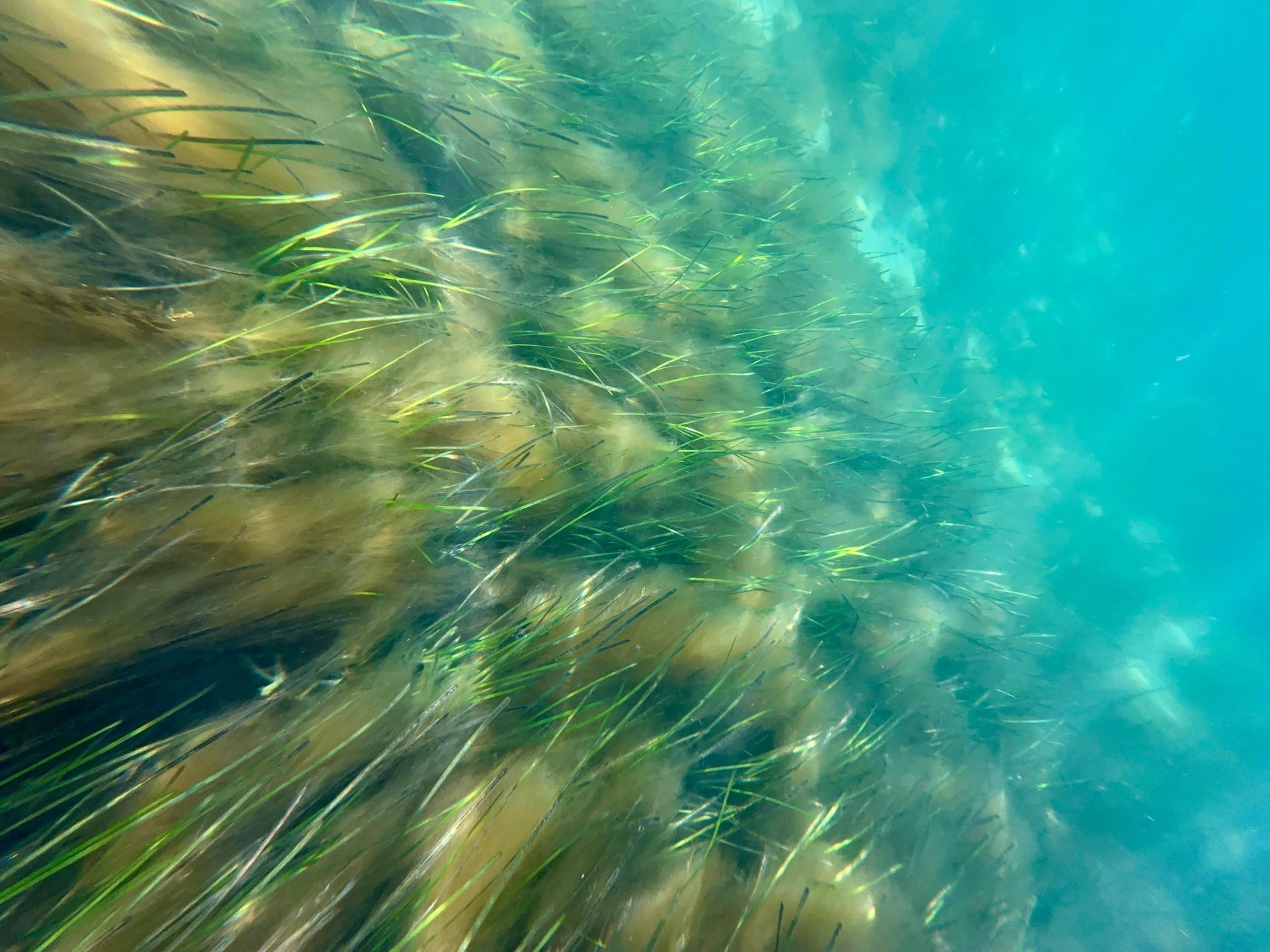
Charles Johnson is the Stormwater Manager for the Town of Nantucket’s Sewer Department. He has worked for the department for seven years as a Treatment Plant Operator and Engineering Compliance Officer. He previously worked as an Environmental Engineer with the DEP in New Jersey and Connecticut and private consulting firms. Charles holds a Civil Engineering degree from Lehigh University and is a licensed Professional Engineer in Connecticut and Massachusetts.
Emma Morgan is the Water Resource Specialist for the Town of Nantucket’s Natural Resources Department. She holds a B.S. in Biology from St. Mary's College of Maryland and an M.S. in Applied Coastal Ecology from the University of Central Florida. Emma manages Nantucket’s water quality monitoring program, analyzing trends and collaborating with local and national organizations to protect the island's waters.
Dr. Richard Blundell is a Visiting Scientist at the Maria Mitchell Association. An ecologist and philosopher, he blends art, science, and nature in his work. As the founder of Oika, his research focuses on transformation at personal, environmental, and global scales. His award-winning creative work has appeared on PBS, National Geographic, and social media platforms.
RJ Turcotte has worked for the Nantucket Land & Water Council for six years, first as Resource Ecologist and now as Nantucket Waterkeeper. He began his career with Save The Bay and the Blackstone River Coalition in Rhode Island. As Waterkeeper, he focuses on eelgrass restoration, water quality monitoring, coastal resilience, and environmental advocacy across the island community.
Tara Riley is the Shellfish and Aquatic Resource Manager for Nantucket’s Natural Resources Department. With 25 years of experience in marine biology and fisheries, she has worked globally on hatchery renovations, including consulting for WHOI in Zanzibar. Since 2009, she’s led shellfish enhancement and water quality initiatives on Nantucket. In 2015, she secured funding for the $2 million renovation of the Brant Point Shellfish Hatchery. Tara has also helped develop the town's shellfish and eelgrass management plans, focusing on sustainability.
Harbor Health: A Collaborative Approach to
Water Quality Monitoring in Nantucket
Join us for an engaging panel discussion on water quality monitoring in Nantucket Harbor. The discussion will feature the Town of Nantucket (ToN) Storm Water Manager, Charles Johnson; ToN Water Quality Specialist, Emma Morgan; MMA Visiting Scientist, Dr. Rich Blundell; Nantucket Land and Water Council Waterkeeper, RJ Turcotte; and Shellfish and Aquatic Resources Manager, Tara Riley. This Science Speaker Series is moderated by MMA Executive Director, Joanna Roche.
During this panel discussion, you will learn about the Nantucket Harbor Monitoring Project, a 2024 water quality monitoring initiative launched by the Maria Mitchell Association, now expanding in collaboration with the Town of Nantucket Natural Resources Department and Nantucket Land and Water Council. The initial project, generously funded by the ReMain Nantucket Fund at the Community Foundation for Nantucket, the Great Harbor Yacht Club Foundation, the Osceola Foundation, the Sociable Weaver Foundation, and through collaboration with the Town of Nantucket's Harbormaster, aims to establish a continuous water quality monitoring system for Nantucket’s lower harbor.
The data collected thus far provides a vital baseline for ongoing environmental assessment and conservation efforts. Thanks to ongoing generous support from the Great Harbor Yacht Club Foundation, we’re excited to expand upon this project in collaboration with the Town of Nantucket and the Nantucket Land and Water Council and continue our work to protect and preserve Nantucket’s beautiful harbor. Don’t miss this opportunity to hear from local experts in resource and conservation management and learn more about how this project is helping to safeguard our treasured harbor for future generations.
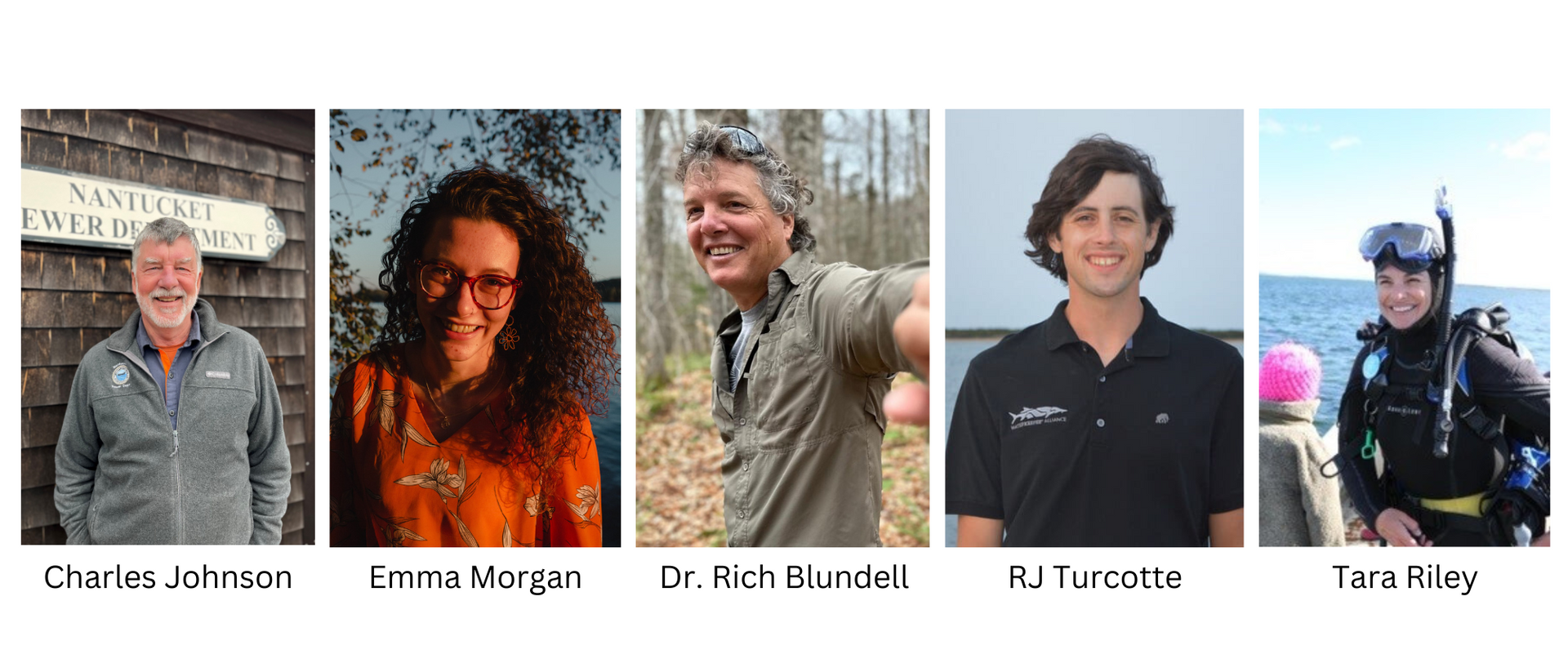
Pam Murphy & Kim Schulam
Marine Mammal Alliance
Nantucket
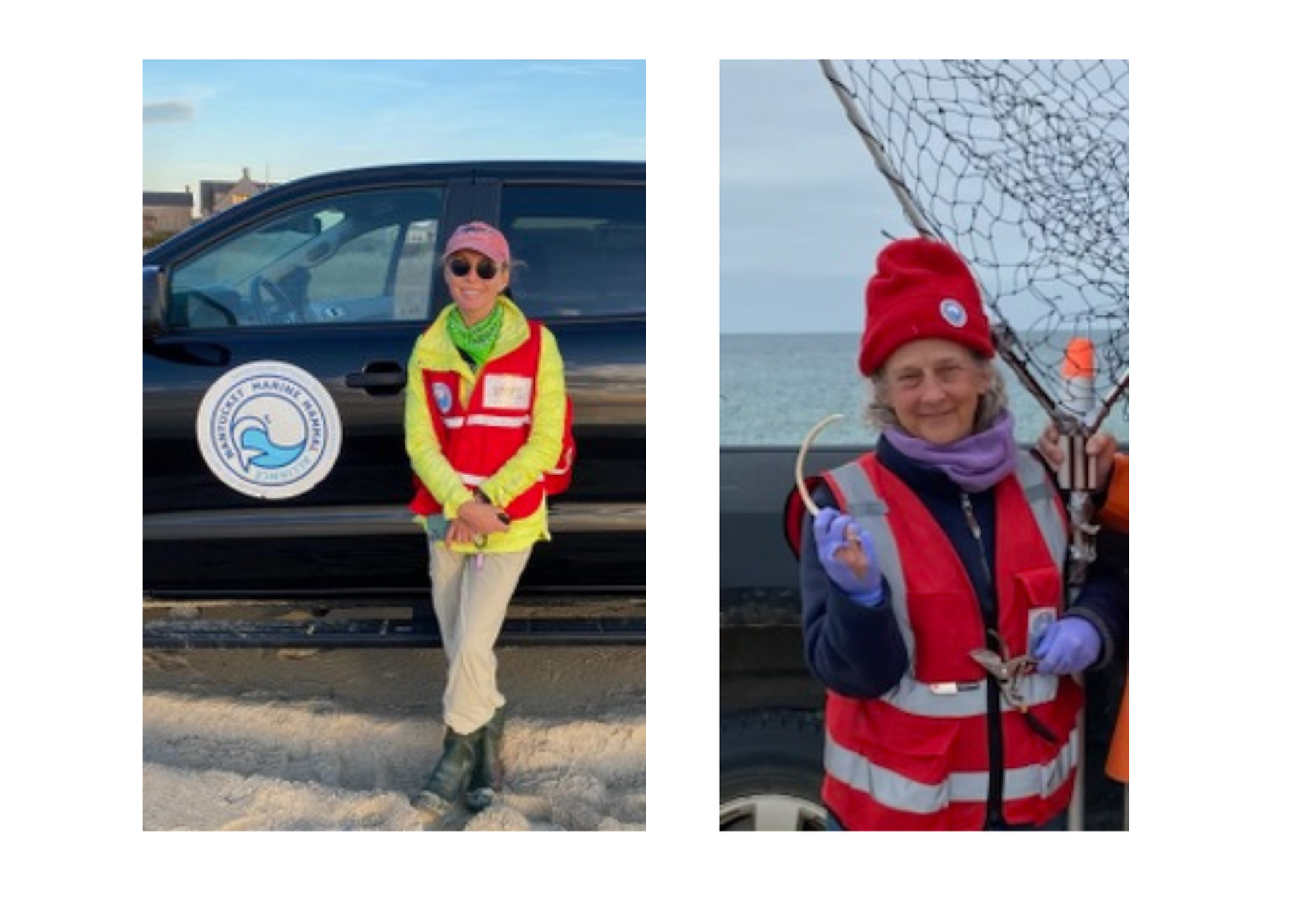
Why Save Seals?
Join Pam Murphy, the MMAN Executive Director, and Kim Schulam, the MMAN Vice President and Stranding Coordinator, in a discussion on the importance of seals and other marine mammals in maintaining a healthy marine ecosystem, and how we can all help keep these populations safe.
The mission of the Marine Mammal Alliance Nantucket is to monitor, rescue, and protect marine mammals on Nantucket, advocate for their well-being, and educate the public. MMAN belongs to the Greater Atlantic Marine Mammal Stranding Network, and is among thirteen organizations dedicated to protecting, rescuing, and advocating marine mammals along the Atlantic coast from Virginia to Maine. You can learn more about the animals they rescue, their partner teams, useful tips, and statistical maps here: https://storymaps.arcgis.com/stories/5d29b842996d44eea0c4517f71ecca4d
Pam Murphy has been involved in animal rescue for many years, from creating a Be Kind to Animals Club at the age of seven, to being one of the founders of Nantucket Island Safe Harbor for Animals (NiSHA) in 2011; serving eight years as board president. Her extensive board experience with TWN, NiSHA, and NAC put her in a solid position to manage MMAN’s board and see it develop into a stronger organization, capable of attracting the donor support the mission deserves. A lifelong vegetarian, Pam has never been able to stand idly by when an animal is suffering. To be allowed to approach injured and entangled marine mammals legally and help was what drew her to MMAN. She became Level A trained, learning to restrain and disentangle seals and went on to attend a Cetacean Stranding Workshop with IFAW. “I have learned a great deal about marine mammals and how to help through the vast knowledge of my teammates.”
Kim Schulam began visiting Nantucket in 2013 and fell in love with the remote, natural qualities of the island. A Biological Sciences major in college, she initially considered the fields of Marine Biology or Veterinary Medicine but ultimately pursued a career as a Physician’s Assistant. Now retired from medicine, she met former Stranding Coordinator Scott Leonard and learned of MMAN. She immediately joined the team and became Level A trained. She regularly attends IFAW’s Marine Mammal Mass Stranding training, and is 24-Hour HAZWOPER certified for oil spill wildlife rescue. Now a full-time resident of Nantucket, she serves as the team’s Stranding Coordinator and Board Vice President. She coordinated MMAN’s first team-conducted large whale necropsy last year and works closely with the National Oceanic and Atmospheric Administration to maintain the team’s Stranding Agreement as Nantucket's sole agency legally permitted to handle marine mammals. She feels strongly that humans have an obligation to marine life to help them survive given all we have done to injure them and destroy their environment.
Gail Walker, Geoff Clayton, & John Barentine
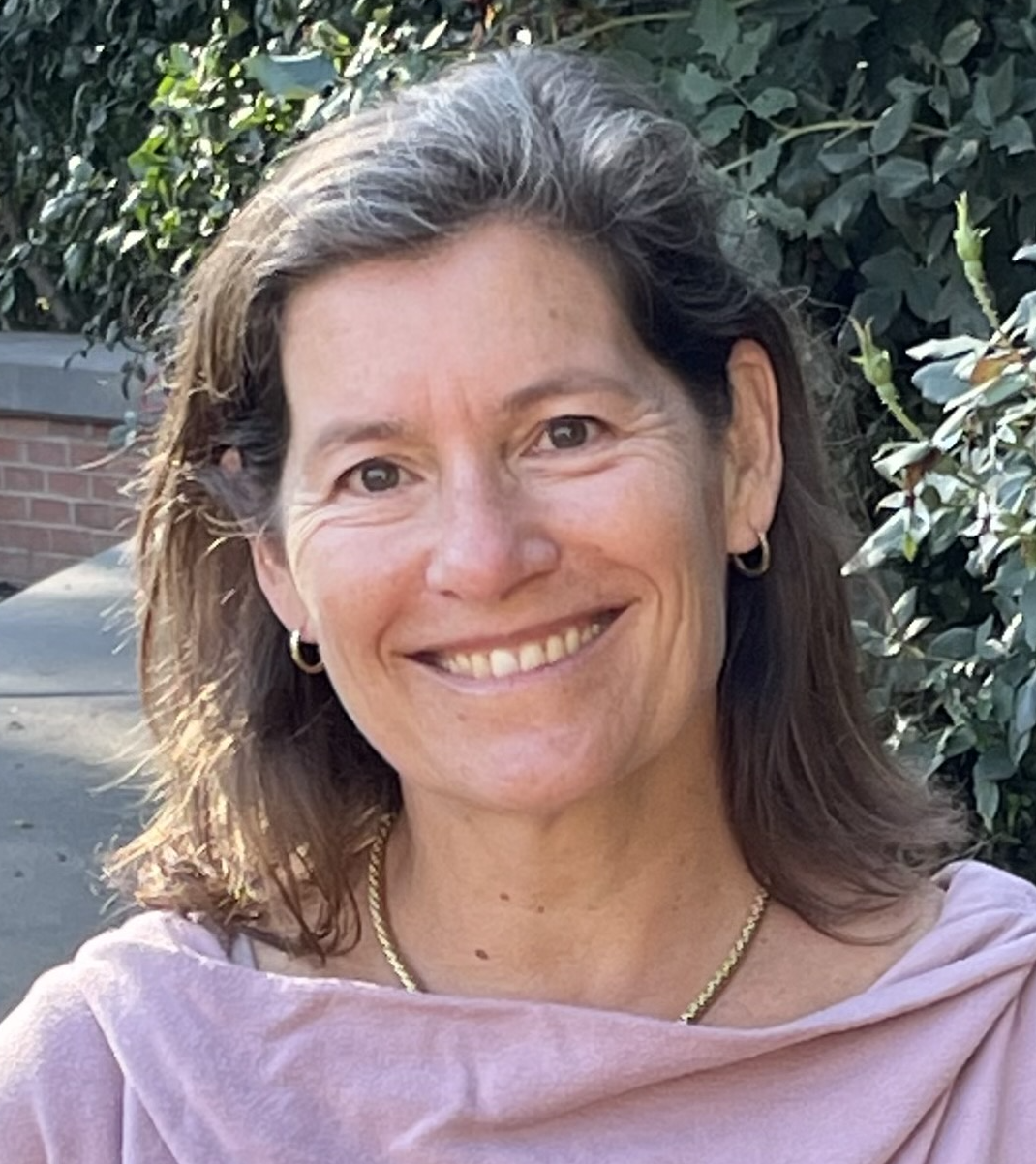
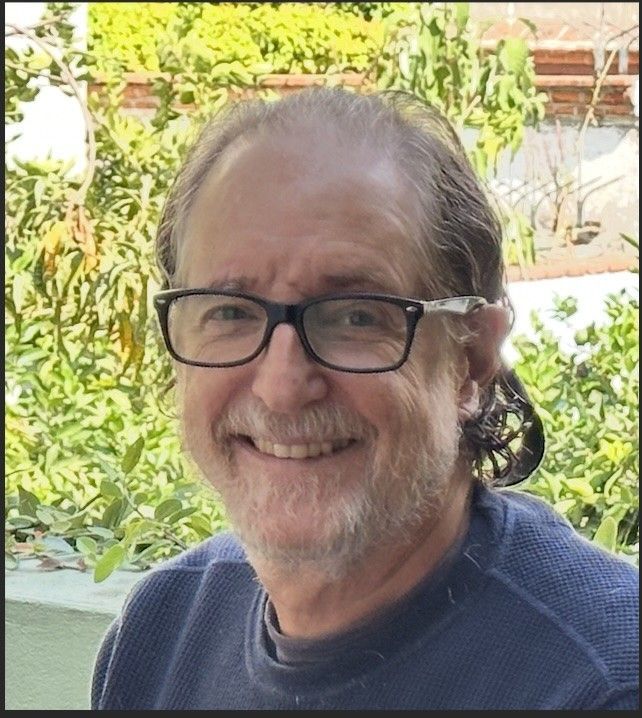
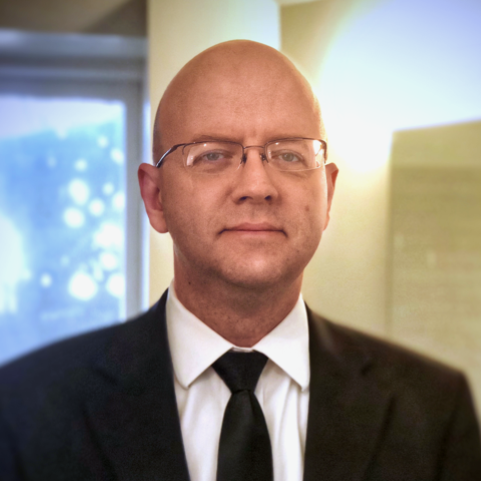
How Dark is Nantucket's Night Sky?
Join
Gail Walker, founder of Nantucket Lights, Dr. Geoff Clayton, Interim Director of Astronomy at the MMA, and
Dr. John Barentine, founder of Dark Sky Consulting, in a panel discussion moderated by the MMA’s Executive Director, Joanna Roche. Learn about the
Nantucket Sky Quality Monitoring Project, a joint initiative of Nantucket Lights and the MMA launched in 2022 to collect ground-based measurements to determine how dark Nantucket's night sky is. The data collected to date establishes a baseline for assessing the effectiveness of efforts to mitigate light pollution going forward — and helps us understand how close we are to losing the ability to see the Milky Way with the naked eye.
Nantucket Lights and the MMA will be explaining how this project works and plans going forward. John Barentine, retained to independently analyze the data collected so far, will discuss his findings and recommendations.
Gail Walker is the founder and president of Nantucket Lights, an all-volunteer, citizen advocacy group exclusively dedicated to preserving and protecting Nantucket’s nighttime environment and heritage of dark skies. A long-time summer resident of ‘Sconset, she began working on light pollution as a board member of the 'Sconset Civic Association following her retirement from the U.S. Department of Justice where she was a trial attorney for almost twenty years. In addition to leading Nantucket Lights, Walker serves on the Executive Committee of the Nantucket Civic League.
Geoffrey Clayton received his Ph.D. in Astronomy and Astrophysics from the University of Toronto. He has worked for the Universities of Wisconsin and Colorado, as well as for NASA. He spent twenty-seven years as a professor at Louisiana State University. His association with the MMA goes back almost sixty years. He attended lectures and attended Open Nights at the MMA when he was a child visiting Nantucket. He still appreciates the dark skies of Nantucket now that he lives on the island full time.
John Barentine is the Principal Consultant and Executive Officer at Dark Sky Consulting, LLC. He earned a Ph.D. in astronomy from the University of Texas at Austin and previously held staff positions at the National Solar Observatory, Apache Point Observatory, the Sloan Digital Sky Survey, and the International Dark-Sky Association. He is a member of the American Astronomical Society (AAS), the International Astronomical Union (IAU), and the Illuminating Engineering Society (IES), and is a Fellow of the Royal Astronomical Society (RAS). He serves on light pollution committees of the AAS, IES and IAU, and co-leads the Community Engagement section of the IAU Centre for the Protection of the Dark and Quiet Sky from Satellite Constellation Interference.
2024 Presenters
“Island Wakes and Coastal Observations: An Early Career in Oceanographic Engineering”
Join Charles Brooks for a deep dive into his travels and experiences as an oceanographic research technician and engineer as Scripps Institute of Oceanography (SIO). Brooks will share his deep connection to Nantucket, share his educational pathway, and traverse the experiences of his early career. Having traveled around the world before dropping anchor at Scripps Institute of Oceanography, Brooks is enthused to give insight into his role as a technician and working aboard the R/V Roger Revelle during a midlife refit. This presentation will feature some of Brooks’ most significant research cruises and experiences culminating in a cruise out of Guam in April 2022 that led him to his current position with SIO’s Coastal Observation Research and Development Center (CORDC). He will also discuss the work of the CORDC and his noteworthy role in sampling of island wakes and coastal monitoring in the form of a project called “Smart Mooring”.
While currently based in San Diego, Brooks' lifelong fascination and love for the ocean began by exploring the waters surrounding Nantucket Island. After numerous positions in the marine industry in Massachusetts and Rhode Island, Brooks moved his career West to SIO as a research technician in the shipboard technical support group. Over four years, he learned to support shipboard oceanographic research while providing learning opportunities for early career scientists and students on SIO's coastal class research vessel. This role quickly expanded to lead technician of the global class research vessel, Roger Revelle, during which time he oversaw extensive mid-life shipyard renovations. Post-shipyard, Brooks supported research aboard Revelle in the far reaches of the Pacific. In his current position as an engineer and field researcher at the CORDC, Brooks' work now includes support of robotic systems, remote sampling platform development, and field research in the Western Pacific. Brooks' talk will cover his career path from New England to the far reaches of the Western Pacific while providing an overview of current research projects.
“Visual Design for Natural Science”
Join MMA enthusiast Morgan Raith as she shares an overview of her design background, creative process, and details of her island-centered interpretive and educational projects. Having grown up on Nantucket, Morgan appreciates the role design and storytelling play in sharing the island's rich history and natural wonders. She is excited to share her unique approach to visual communications and problem solving.
Morgan is an artist, designer, and creative strategist specializing in science communication. She provides creative direction for clients in marine technology, natural sciences, education, and conservation. Morgan works closely with scientists, engineers, teachers, and cultural experts to transform complex information into accessible visual content for various audiences and settings. Her portfolio includes self-guided tours, interpretive signage, scientific illustration, visual guides, digital storytelling, and exhibit design.
“Harbor Monitoring Project Report #1: Deployment, Preliminary Data, and Interpretations”
Join Dr. Rich Blundell, MMA Visiting Scientist as he shares about the deployment of the EMM700 Bay Buoy and sensors, the preliminary collected continuous data, and his interpretations of the MMA's Harbor Monitoring Project, the first of its kind on Nantucket. Blundell will also discuss the logic and findings of the decisions and considerations for collaborative research agendas as the project progresses. This project will collect and publish continuous data on seawater acidity (pH), dissolved oxygen, temperature, total algae, dissolved nitrates, and salinity (conductivity). This data will create the "Mitchell Curve," a long-term, permanent record of water quality in the Nantucket Harbor.
Dr. Rich Blundell is an ecologist and philosopher working at the convergence of art, science, nature and culture. As the founder of Oika, his research examines how transformation happens across the scales of person, place and planet. As a communicator, Rich tells a scientific story of the universe that includes art and human creativity as natural phenomena. Dr. Blundell’s research and work has received numerous grants and awards including, an ongoing TIDES innovators award, The National Science Foundation grant for Science Out There, the Michael Brinkman Award, The Deep Time Values video award for An Earth Story, The Macquarie University Innovation in Scholarship award for The Cosmosis1 Explorer app, an Oculus Creators Award for In the Light of the Forest VR, and nomination for the Jackson Hole Wildlife Film Festival Best New Media for Saving Grey’s Zebra. Blundell’s creative video work has appeared on PBS, National Geographic and numerous social media platforms. He is currently the Visiting Scientist at the Maria Mitchell Association.
September 25
7:00 PM - 8:00 PM EST
“Autonomous, Precise, and Real-Time Coastal Water Quality Monitoring”
Shawn Sneddon and Jon Fajans of Yellow Springs Instruments (YSI), a Xylem Inc. brand which serves as a leading provider of water measurement solutions, will present in person at the Great Harbor Yacht Club at 56 Union Street and via Zoom.
Due to its unique geographic, hydrographic, ecologic, and cultural setting, Nantucket Harbor has one of the last remaining healthy eelgrass (Z. marina) beds in New England. The shape of Nantucket Harbor forces incoming sea water to pass over the eelgrass beds, which sequester the water’s carbon dioxide. Seagrasses can consume more carbon dioxide per acre than rainforests, and noticeably lower the acidity of the water around them. The MMA believes the confluence of these factors also makes Nantucket Harbor one of the best locations to investigate the impacts of healthy eelgrass on the commercially valuable Nantucket bay scallop (A. irradians). Ocean and coastal water quality monitoring applications require both precise and rugged instrumentation that will withstand harsh environmental conditions and still output accurate data.
Join Shawn Sneddon and Jon Fajans of YSI as they share about the science, logistics, and analytics of the EMM700 Bay Buoy and sensors that will be deployed in a continuous data collection and publication monitoring project, the first of its kind on Nantucket. This project will collect and publish continuous data on seawater acidity (pH), dissolved oxygen, temperature, total algae, dissolved nitrates, and salinity (conductivity). This data will create the "Mitchell Curve," a long-term, permanent record of ocean acidification in Nantucket Harbor.
Shawn Sneddon has over sixteen years of experience in the Oceanographic and Water Quality field, designing, integrating, and deploying a vast array of real-time monitoring systems with a heavy focus on custom system integration. After taking over the autonomous vehicle fleet in 2015, Sneddon is now one of the lead engineers for all things autonomous: performing hydrographic surveys, trainings, customer/sales support, and demos for customer applications. Sneddon started his career as a service and calibration engineer for Aanderaa before moving into a Systems Engineering role for the integrated systems and services division of YSI. He is currently the System Sales Engineer and Vehicle Specialist for YSI.
Jon Fajans earned a Bachelor’s degree in Health Sciences and served eleven years in the U.S Coast Guard as a Flight Surgeon’s Assistant. He earned additional Bachelor’s degrees in Zoology and Wildlife Ecology, and a Master’s degree in Fisheries and Aquatic Sciences studying marine invasive species at the University of Florida. Since then, Fajans has been the manager of the SEAKEYS Monitoring Program in the Florida Keys National Marine Sanctuary as a scientist for the Florida Institute of Oceanography, Dive Safety Officer for the University of Belize, and President of C‐ARMS Inc., a small marine research consulting company. He served as a scientific support coordinator in the NOAA Subsurface Monitoring Unit for the Deepwater Horizon incident response and has installed ICON buoys throughout the Caribbean on a joint Caribbean Community Climate Change Center‐NOAA AOML project. Fajans came to Xylem in 2015. He now serves as manager for Ocean & Coastal Applications covering the Americas and Caribbean.
August 12
6:00 PM - 7:00 PM EST
Please join us in person or online via Zoom for a very special presentation of this summer’s astronomy research. The MMA’s National Science Foundation Research Experiences for Undergraduates (NSF-REU) interns will present their research on everything from finding baby stars to understanding how galaxies grow over time and how dark matter influences galaxy cluster collisions.
The MMA’s Maria Mitchell Observatory operates the NSF-REU program each summer and has done so for decades. The program, funded by a generous grant from the National Science Foundation, allows the MMA to bring six top undergraduate students to the MMA each summer who are selected out of a pool of approximately 380 applicants from around the United States. This summer’s NSF-REU interns and their research presentations are:
Naija Bruckner (Rice University): Probing Circumgalactic Medium Turbulence with Synthetic Absorption
Sophia Davis (University of Michigan): Shining the X-ray light on Planetary Nebulae in Globular Clusters
Jillian Epstein (Cornell University): Searching for X-ray Counterparts of Protostellar Cores
Fiona Lopez (Texas A&M University): Understanding the Interplay between Dust, Gas, and Stars in High Redshift Galaxies with ALMA and JWST
Nicolas Mazziotti (University of Arizona): Exploring Dark Matter and Galaxy Clusters
Gada Tefera (Pomona College): Investigating the Impact of sub-DLAs on the Neutral Hydrogen Mass Density of the Universe
The Nantucket Maria Mitchell Association (MMA), founded in 1902, is a recognized leader in inspiring and training the next generation of astronomers and scientists. Since the Astronomy Department’s inception, hundreds of undergraduate students, the great majority of them women, have discovered the joy of doing astronomical research surrounded by the natural beauty and dark skies of Nantucket Island. Many have gone on to successful careers as astronomers at leading universities, observatories, and other organizations. In fact, it is estimated that one of every twenty American women PhDs in astronomy today acquired their first research experience at the MMA’s Maria Mitchell Observatory. The organization’s success in STEM education was recognized in 2009 with the prestigious Presidential Award for Excellence in Science, Mathematics, and Engineering Mentoring from President Obama for its half-century long program of mentoring student research in astronomy.
“Living Legacy: The Atlantic Horseshoe Crab”
If you've walked the beaches during high tide recently, you likely have seen horseshoe crabs crawling along the water line. Even during low tides, you may have seen their tracks in the sand from where they've traveled around to mate. Horseshoe crabs are a common sight in the summer, but there's a lot more to these prehistoric critters than meets the eye. Relatively unchanged on Earth for nearly 450 million years, horseshoe crabs are unique even among the usual oddities we see in the ocean.
With ten eyes, blue blood, six pairs of appendages, green eggs, and more, the Atlantic horseshoe crab is enigma that could have a semester-long course dedicated to it, but at this talk, we'll do our best to condense the creatures into an hour-long discussion about biology, behavior, and human relations. All who want to learn more about these fantastic creatures are welcome to join!
As an Aquarium Intern in 2022, Christina got to learn about the wonders of Nantucket. The first time she saw horseshoe crabs spawning at Monomoy Beach, she knew she'd made the perfect choice of internships. After finishing her internship, Christina did a six-month AmeriCorps term in Holderness, New Hampshire, working with the Lakes Region Conservation corps and Squam Lakes Association to monitor water quality, manage trails, remove invasive aquatic plants, and inspect boats for hitchhiking invasives. After her AmeriCorps term, Christina rejoined the Maria Mitchell Association in 2024 as the Interim Natural Science Museum Manager. Now, as the Aquarium Manager, Christina enjoys talking to the public about the marine wonders of Nantucket. She tries not to be biased, but it's clear that horseshoe crabs hold a special place in her heart.
“Reflections of Freedom: An Artist's Dialogue on Juneteenth”
Historically, many African Americans have been deeply connected to the cosmos. From Harriet Tubman to Mae Jemison to Dr. Chanda Prescod-Weinstein and Dr. Jedidah Isler, many have heard the call to look up and have experienced the inevitable paradigm shift that comes with a view that is truly “big picture." Celebrate Juneteenth over tea with astrophotographer Charity Grace Mofsen, as she gives a talk on the history of this connection, the black excellence—astronauts, astronomers, and astrophysicists—who inspire her, and her photographic journey to reclaim and reconnect with her roots.
Juneteenth marks the day in 1865 when the enslaved people in Galveston, Texas were informed by a Union Army general that they were free, over two years after President Abraham Lincoln signed the Emancipation Proclamation.
“The Great North American Eclipse of 2024”
On April 8, 2024, a total solar eclipse will cross a large part of the North American continent. This will be the last total solar eclipse to cross North America for the next two decades, making this a “do-not-miss” event! Millions of sky-watchers from across the country are expected to travel to the path of totality, a ~115-mile-wide swath that stretches from the western coast of Mexico, up through Texas, the Midwestern states, and through parts of New York, Vermont, New Hampshire, Maine, and Eastern Canada.
In this ZOOM talk, Dr. Jorgenson will share a brief history of eclipses, focusing on astronomer Maria Mitchell’s experiences and legacy, and then discuss what to expect and how best to prepare for the upcoming April 8 solar eclipse – whether you will be located on Nantucket, travelling to path of totality, or located elsewhere. The talk will be followed by a question-and-answer session.
Dr. Regina Jorgenson is the Director of Astronomy at the Maria Mitchell Association. As an undergraduate student, Jorgenson’s formative experience as an NSF-REU intern at the Maria Mitchell Association helped inspire her to make a career out of her love for astronomy. Jorgenson received a B.S. in Physics from the University of Puget Sound and an M.S. and Ph.D. in Physics from the University of California, San Diego. She held research positions at Cambridge University in the United Kingdom and at the Institute for Astronomy in Hawai’i before becoming Director of the MMO in 2016.
“Looking for Life in Our Solar System: A Mars-Earth Comparison”
Since the dawn of civilization, humankind has wondered if human life on Earth is alone in the universe. Modern science refines this question to be about the search for water –where life began on Earth – on planets in our solar system and beyond. Recent NASA missions have focused on this issue through studies of subsurface ice on Mars, water cycles on the Earth, and the enigmatic clues of oceans and water left behind on Venus. This talk traces recent and emerging evidence about the presence of water on these three terrestrial planets.
Darby Dyar is the Kennedy-Schelkunoff Professor of Astronomy at Mount Holyoke College and Senior Scientist at the Planetary Science Institute. Dyar is a mineralogist and spectroscopist interested in a wide range of problems relating to the evolution of the solar system. She studies the redox state of iron and the abundance of hydrogen in solar system materials using Mössbauer, x-ray absorption, and FTIR spectroscopy. Dyar has pioneered the use of machine learning tools to interpret spectroscopic data. She is the Deputy Principal Investigator on the VERITAS mission to Venus and was a participating scientist on the Mars Science Laboratory science team. Her honors and awards include the G.K. Gilbert Award for outstanding contributions to planetary science from the Geological Society of America (GSA), the Hawley Medal from the Mineralogical Association of Canada, and the Eugene Shoemaker Distinguished Scientist Medal from NASA. She is a Fellow of: GSA, the Mineralogical Society of America, and the Geochemical Society. She earned her B.A. from Wellesley College and her Ph.D. in geochemistry from Massachusetts Institute of Technology.
Past Presenters 2023
"The Keys to Success. . .
Are Somewhere at the Bottom of My Purse"
The title of this presentation would suggest that she is clearly not an expert on the keys to success. Nevertheless, the presentation highlights Nancy Ryan Gray's circuitous career path, a few of the “lessons” she has learned over the past thirty years, and the “things she knows now” but “wish she'd known then.”
Nancy Ryan Gray is the current President and Chief Executive Officer of the Gordon Research Conferences. Nancy received her B.S. degree in chemistry from the University of Notre Dame and her Ph.D. in Fuel Chemistry from The Pennsylvania State University. Prior to joining GRC, Nancy served as the Director of Membership at the American Chemical Society and as a Research Specialist in Organic Chemistry at Exxon Production Research Company. Nancy has served on the Board of Directors of Ligand Pharmaceuticals since August 2017. Ligand is a biopharmaceutical company focused on developing or acquiring technologies that help pharmaceutical companies in drug discovery, early-stage drug development, and product reformulation. Nancy has also served on the Board of Directors of Slater Technology Fund since March 2021. Slater is a not-for-profit seed fund dedicated to supporting new technology ventures founded by entrepreneurs to build companies that aim to achieve transformational impact in the industries or markets they serve.
Nancy is recognized for her efforts in establishing and growing the Gordon Research Seminar (GRS) initiative to enable graduate students and postdocs to share in the GRC experience. The GRS is a two-day meeting designed specifically for early career scientists to present and discuss research and build collaborative relationships with colleagues. She is also recognized for founding the GRC Power Hour initiative as a forum for conversations to promote inclusion and addressing the challenges women and all underrepresented groups face in achieving equity in science. The 2013 recipient of the Providence Business News Industry Leader Award for Non-Profit Organizations, Nancy is a Fellow of the Royal Society of Chemistry, a Fellow of the American Association for the Advancement of Science, and a member of the American Chemical Society. Nancy received an honorary Doctorate of Humane Letters from Colby-Sawyer College in 2019 for her leadership and the commitment she has offered to Gordon Research Conferences and the scientific community.
"In a Galaxy Far, Far Away: Spectral Analyses of Distant Galaxies"
Join MMA's National Science Foundation Post-Baccalaureate Research Fellows, Emmy Wisz and August Muller for a pop-up science talk concerning their research. People may know them from Open Nights at Loines Observatory and their weekly Star Reports.
How do we learn about galaxies a billion light years away? How do we learn about the history of our own home galaxy, the Milky Way? By using spectral analysis, as well as other techniques, we can gain insight into the chemical composition of faraway galaxies and their environments, creating a roadmap to understand how galaxies form and evolve over time. Emission from galaxies reveals properties of the local galactic environment, such as the star formation rate and age. Absorption features provide a peek into regions of the galactic environment that are rich in gas and home to the elements necessary for star formation.
Focused on a type of galaxy called a damped Lyman-alpha system, or DLA for short, Emmy Wisz will explain how we use bright background sources as lighthouses to learn about galaxies that are too distant to be seen directly. By investigating the home galaxies of the still-mysterious fast radio bursts, August Muller will discuss how these strange bursts may come to be and how we are using them to probe the distant Universe.
Emmy Wisz obtained her B.A. in Astronomy and Physics from Bryn Mawr College. Her undergraduate research focused on galaxy formation and evolution, studying the impacts of morphology on radial metallicity gradients. She is excited to continue to be involved in the field of galaxy evolution, researching damped Lyman-ɑ (DLA) systems to expand on her understanding of the formation of galaxies over time.
August Muller holds a B.S. in Physics from Haverford College. Her undergraduate thesis investigated techniques for detecting extreme mass-ratio inspiral gravitational wave signals for the upcoming LISA gravitational wave detector. During her year on Nantucket, August is excited to learn more about observational astronomy as she investigates the host galaxies of fast radio bursts.
"Don’t Click That Link!"
The Internet has brought amazing services to your living room and phone, from streaming music and movies, to online commerce and banking. At the same time, this brave new world has created an environment rich with bad actors, scams, attacks, breaches, data-spills, and more. There are a lot of threats out there, but being aware of which ones are real, which ones are myth, which ones are likely, and which are rare will help you navigate the Net more safely.
In this presentation, Richard Ward will discuss some of the common threats and work our way up to some very sophisticated attacks that have become part of the threat landscape.
Richard Ward, B.S, Technical Fellow, leads the Enterprise and Security team for the Microsoft Windows and Devices Group. There, he oversees the engineering teams responsible for the security of the Windows platform, as well as the connection to the commercial customers and their requirements. Previously, he ran the Storage and Networking team for Windows; as well as the Windows Phone team, running the Developer Platform team; and the Windows Mobile Labs team, focused on incubation and prototyping of new technologies in the mobile space. Ward joined the Windows Mobile team after a long stay in Windows, where he headed the Core Architecture team. In that role, he focused on broad design issues such as state separation and management for both Windows components as well as applications. Ward also ran the security development team for Windows NT 3.5 and NT 4.0 and the core security group for Windows 2000. During this time, Ward wrote the first SSL and Kerberos implementations for Microsoft, and oversaw the evolution of the original NTLM authentication protocol. Ward joined Microsoft in 1989 as a security developer for the LAN Manager product line.
"Using X-Rays to Probe the Universe's Strongest Magnetic Fields"
High energy astrophysics tests our understanding of fundamental physics in the most extreme environments in the Universe. Among these are neutron stars, which host the Universe’s most powerful magnetic fields. These fields are impossible to reproduce in Earth-based laboratories, but observational astrophysics offers a direct way to investigate these environments. Brumback works with systems called X-ray binaries, in which gas donated by a stellar companion moves towards the neutron star and becomes increasingly hot until it emits X-rays. Eventually, the magnetic force becomes much stronger than the gravitational force and the gas is funneled onto the magnetic poles of the neutron star. Brumback is interested in studying the shape and movement of gas in this region, where the gas flow transitions from gravitationally dominated to magnetically dominated. By using X-ray observations from different NASA missions, these regions can be studied and the shape of the gas as it moves around the neutron star can be mapped.
Professor McKinley Brumback is an astronomer who studies X-rays coming from some of the most energetic and extreme environments in the Universe. She uses observations from NASA and ESA X-ray observatories to investigate how matter behaves close to neutron stars, the ultra-dense and magnetic objects left behind by massive stars. Brumback is an Assistant Professor in the Department of Physics at Middlebury College in Middlebury, Vermont. She completed her PhD in Physics and Astronomy at Dartmouth College in 2020. After graduation, she continued her X-ray astronomy research with postdoctoral positions at the California Institute of Technology and the University of Michigan.
"Why Science Matters – Finding New Meaning in Life, the Universe & Everything"
What can the most ancient light of the universe tell us about how to live in the modern world? How can the stunning images captured by the James Webb Space Telescope shift our conceptions of life here on Earth? How can the cellular phospholipid bilayer help humans find consensus across the current political divide? How does the shape of a 400,000 year-old stone tool also shape the appeal of a Shakespearean sonnet?
In this talk, Dr. Rich Blundell, will explore new ways in which science can matter in our times. He will do this by telling scientific stories that highlight the latest insights from across the scientific disciplines of physics, astronomy, biology, ecology, and anthropology. Dr. Blundell will also integrate insights from his own work in the field of oikalogical research (ecological research that includes culture) over the past two seasons as the Scientist-in-Residence at the Maria Mitchell Association.
Through science, imagination and conversation he will help discover new sources of meaning that might help ease our way through the uncertain but surely exciting times ahead.
This feature presentation will give an overview of the biology of the Nantucket Bay Scallop and its unique fishery. Dr. Valerie Hall, Maria Mitchell Research Associate, and nine of her students: Ellie Kinsella and Gray Simanson; Sophia Beni, Gus Simanson, Sayam Thapamagar, James Borthwick, Kate Kinsella, Julia Winsor, and Aiden Haase will first describe the biology of the Nantucket Bay Scallop, Argopecten irradians. This presentation will cover the Bay Scallop classification, habitat, distribution, ecological niche, life cycle, reproduction, timing of spawning, predators, parasites, and environmental hazards the species faces. Students will then describe the laboratory and field program which is now in its eighth year at the Maria Mitchell Association.
They will also share their experiences on scallop collecting trips in addition to the process of dissecting and preparing the reproductive tissue for histology (the process by which microscope slides are prepared from thin sections of gonad). Finally, students review their examination of prepared slides to determine the degree of spawning of each collection and co-relate their findings to water temperature. Students not only learn how to collect and analyze data but also to master the biology of this species while they gain experience and skills working as a part of a team in a research laboratory setting.
Dr. Valerie Hall has lived on Nantucket for 46 years. After a 35-year career teaching high school science, mostly on Nantucket, she earned her Ph.D. in Fisheries Oceanography at the University of Massachusetts’ School for Marine Science and Technology in 2014. She then began a research and mentoring program at the MMA which has just completed its eighth summer. During that time, Dr. Hall has worked with over 80 high school and college students alike. Students earn community service hours and have benefitted immensely from Dr. Hall’s program, many of them asking to return for subsequent seasons.
The MMA’s 2023 National Science Foundation Research Experiences for Undergraduates (NSF-REU) interns will present their research on everything from exploding stars to supermassive black holes and galaxies in the early Universe.
The MMA’s Maria Mitchell Observatory operates the NSF-REU program each summer and has done so for decades. The program is funded by a generous grant from the National Science Foundation. Each summer, six top undergraduate students are selected out of a pool of approximately 300 applicants from around the United States. NSF-REU interns come to Nantucket for ten to twelve weeks during the summer to participate in astrophysics research projects. While on Nantucket, the NSF-REU interns also participate in the outreach efforts of the Observatory, primarily by hosting public Open Nights at the Loines Observatory.
This summer’s NSF-REU interns and their research presentations are:
Sherelyn Alejandro (CUNY Hunter College): Bringing the Time Domain Revolution to Spectroscopy
Lailyn Borum (University of Michigan): Using the Chandra X-ray Observatory to Observe Nearby Supermassive Black Holes
MacKenzie Dean (University of Colorado, Boulder): The Hidden Hearts of AGN Galaxies
Eldon Fobbs (Texas Tech University): Constraining the Evolution of Galaxy Metallicity Across Cosmic Time
Jonathan Kho (Michigan State University): Studying Core-Collapse Supernovae and Their Environments Using Numerical Simulation
Madison Reich (Trinity University): Discovering Hidden Black Holes More than Halfway Across the Universe.
The Nantucket Maria Mitchell Association (MMA) has existed for 119 years and is a recognized leader in inspiring and training the next generation of astronomers. Since its inception, hundreds of undergraduate students, the great majority of them women, have discovered the joy of doing astronomical research surrounded by the natural beauty and dark skies of Nantucket Island. Many have gone on to successful careers as astronomers at leading universities, observatories, and other organizations. In fact, it is estimated that one of every twenty American women PhDs in astronomy today acquired their first research experience at the Maria Mitchell Observatory (MMO). The organization’s success in STEM education was recognized in 2009 with the prestigious Presidential Award for Excellence in Science, Mathematics, and Engineering Mentoring from President Obama for its half-century long program of mentoring student research in astronomy.
MMA NSF-REU interns have won the prestigious Chambliss Astronomy Achievement Student Award in each of the past five American Astronomical Society winter meetings, a testament to quality of the MMA’s astronomy internship program. Approximately 90% of MMA astronomy interns have gone on to astrophysics Ph.D. programs.
"When Stars Attack! Near-Earth Supernova Explosions and Their Radioactive Fingerprints"
The most massive stars are the celebrities of the cosmos: they represent a small fraction of all stars, but live extravagant lives and die in spectacular and violent supernova explosions. While these events are awesome to observe, they can take a sinister shade when they occur closer to home, because an explosion within a certain "minimum safe distance" would pose a grave threat to Earthlings. We will discuss these cosmic threats to life and show compelling evidence of “near miss” supernova explosions from three and seven million years ago that both rained their debris upon the Earth. This discovery allows us to study supernova ashes in the laboratory and confirms that nearby explosions are a fact of life in our Galaxy. We then press further, presenting recent evidence that supernova explosions could have caused biological extinctions on Earth around 360 million years ago. We conclude with tests of this hypothesis, including the search for trace amounts of radioactive supernova by-products in fossils that witnessed the end of the Devonian period.
Brian Fields is a professor of Astronomy at the University of Illinois, where he also is an affiliate Professor of Physics. He studies the "inner space/outer space" connections that link the science at the smallest and largest scales. He is particularly interested in the highest-energy sites in nature ̶ the big bang, exploding stars (supernovae), and high-energy particles in space (cosmic rays) ̶ where all fundamental forces play essential roles. He is fascinated by the way that the human narrative is ultimately linked to that of cosmic events that largely pass unremarked but ultimately shape our lives.
Originally from New Jersey’s Pine Barrens, Rita Leduc is an interdisciplinary artist living in New York’s Hudson Valley. Her overarching practice is led by spirited explorations into ecosystems: environmental, human, and organizational. In all her work, Leduc’s process is one of examination, absorption, participation, and becoming. Along this ever-evolving process, she uncovers pathways of understanding and possibility. In addition to Oika Expedition Nantucket, current engagements include "Ecology Extended," an Oika collaboration with Dr. Rich Blundell at Hubbard Brook Experimental Forest; GROUNDWORK Interdisciplinary Retreat; The Place Collective; Arts@FSMLs; and additional Oika endeavors.
Leduc’s work has been shown throughout the greater New York City area and beyond, including exhibitions at Stand4 Gallery (NYC), The Museum of the White Mountains (NH; also upcoming Oct. 2023), Mount Saint Mary College (NY), Wells College (NY), Nizhny Tagil Museum of Fine Art (Russia), RAW (Miami), and Ortega y Gasset Projects (NYC). Past residencies include i-Park Foundation, PLAYA, Tofte Lake, Vermont Studio Center, and White Pines Bird Language Retreat. She has received support from NYFA, the Jerome Foundation, Atlas Obscura, Oika, Wells College, and Rutgers University, among others. She has published, presented, and workshopped her work widely, most recently in unpsychology magazine (“An Anthology of Warm Data” and “Other Than Human”), at Dartington Hall for Art.Earth’s “Sentient Performativities'' conference, and at several national Art-Sci events. Leduc received her MFA from Mason Gross School of the Arts at Rutgers University, Post-Baccalaureate Certificate from the School of the Art Institute of Chicago, and BA from the University of Pennsylvania. She currently teaches at Ramapo College and Rutgers University.
Oika artist Rita Leduc will speak about how her place-based, nature-grounded art practice aligns with Maria Mitchell's directive to, "Mingle the starlight with your lives." Referencing her artwork currently installed in and around the MMA grounds as part of the Oika Art Exhibition, she describes how her process of direct, personal acquaintance with place creates work that is tethered on one end to "life"- specific relationships with place, and on the other to "starlight," i.e., universal concepts of reciprocity, continuity, and consciousness.
"Measuring the Growth of the Universe with Multiple Datasets"
How the largest structures in the Universe grew from the beginning of time to what we see today is a major puzzle in understanding the evolution of our Universe. Recent studies that measure the growth of structure in our Universe appear to disagree with each other depending on whether the data was obtained from the very early Universe or the more recent Universe.
In this talk, Karim will contextualize this emerging exciting, yet puzzling, anomaly seen in cosmological datasets and what it may suggest about our Universe. Additionally, he will share a new measurement that hopes to shed light into this anomaly using multiple datasets. Finally, he will expand on how the ongoing and future cosmological surveys can potentially resolve this anomaly and paint a comprehensive picture of the evolution of the Universe.
A 2016 Maria Mitchell Association (MMA) National Science Foundation Research Experience for Undergraduates intern in the MMA Astronomy Department, Tanveer Karim is currently a visiting postdoctoral fellow at the Center for Astrophysics | Harvard & Smithsonian and will be starting as a Faculty of Arts & Sciences Fellow and a Dunlap Fellow at the University of Toronto in the fall of 2023. He recently defended his Ph.D. from Harvard University and prior to that obtained his B.S. in Physics and Astronomy from the University of Rochester. His area of specialization is observational cosmology, and he has been involved with the Dark Energy Spectroscopic Instrument (DESI) collaboration since the beginning of his graduate school career. Outside of research, he enjoys the outdoors, reading, and learning languages.
"Where Are We? What Is Our Place in the Universe?"
In this lecture, Fazio will take us on a grand tour of the Universe, beginning at our planet Earth, traveling through our solar system, galaxy, and into extragalactic space, ending at the edge of the known Universe. Enjoy this fascinating and exciting journey!
Dr. Giovanni Fazio is currently a Senior Physicist, at the Center for Astrophysics,
Harvard | Smithsonian; Faculty Emeritus, International Space University, Strasbourg, France; and for many years a Lecturer in the Astronomy Department at Harvard University. He received his Ph.D. in Physics from the Massachusetts Institute of Technology (MIT) and has performed research in the area of space astronomy for more than sixty years. He has been the Principal Investigator for instruments on three space telescope missions and Co-Investigator on a fourth space mission. He was the Principal Investigator for NASA's Spitzer Space Telescope/Infrared Array Camera, which observed the Universe for more than sixteen years. He has served on numerous NASA advisory committees and is the recipient of many national and international awards.
"Exoplanets: Where They Are and How You Can Help Find Them"
Considering the immense size and scale of our own solar system, one would expect that finding planets around other stars, or exoplanets, would be nearly impossible. However, over the past few decades, astronomers have developed many amazing techniques for accomplishing this task. In this talk, Lark will discuss these techniques, and describe the method used to aid in the search for exoplanets. He will also describe how you can get involved in helping NASA discover exoplanets using your own backyard telescope!
Dr. Adam Lark is an Associate Professor of Instruction in the Physics Department at Hamilton College and the Director of the Peters Observatory. He earned his doctorate at the University of Toledo researching discovery-based learning in physics laboratories and globular clusters detection techniques. Using the modest telescope at the Peters Observatory, Lark aids in the search for exoplanets through NASA's TESS follow-up exoplanet observation program.
"Interconnected: A Journey Through Inner and Outer Space"
How do art and science connect? As an astronomer and visual artist, it’s a question Dr. Nia Imara is often asked. Her astronomy research aims to illuminate how stars are born in vast “stellar nurseries” residing in our Milky Way Galaxy and beyond. Her art is steeped in black culture and centers on people. How do the two go together? In this talk, Dr. Imara will invite the audience on a journey through inner and outer space and share some of what inspires her as an artist-scientist. In doing so, she will explore some potential connections between art and science and how culture plays a major role in both of these uniquely human endeavors.
Dr. Imara is from the San Francisco Bay Area. She received BAs in physics and math from Kenyon College and would later become the first African American woman to earn her PhD in astrophysics from UC Berkeley. She completed her postdoctoral research at Harvard University. She is currently a professor of Astronomy at UC Santa Cruz where she investigates how stars are born in the Milky Way and other galaxies throughout the universe.
Dr. Imara is an accomplished artist and astrophysicist whose body of work reflects her love for vibrant color, people, and their stories. Her media includes painting, quilting, and posters. Dr. Imara is the founder/director of Onaketa, a nonprofit that provides free STEM tutoring and other educational resources to underserved youth of color. Dr. Imara’s work is grounded in, bringing the magic of the universe closer to a wider audience. She accomplishes this through her science work, art, and community building.
"Lessons From A Bed of Nails: The Physics of Floating"
Using child-friendly demonstrations, in his presentation Prof. Jones will use a bed of nails, a vacuum bazooka, and a floating bowling ball to explain why our ears pop in airplanes and why heavy ships float.
Gordon Jones is the Stone Professor of Physics at Hamilton College. After studying atomic physics at Williams College, he received his Ph.D. in nuclear physics at Princeton University in 1996. He then combined these fields working with neutron beams at the National Institute of Standards and Technology (NIST). His work has continued at Hamilton College since 1999, focusing on both polarizing neutrons to study magnetic materials and on watching neutrons decay to study fundamental laws of nature. He has introduced over 100 undergraduates to the joys and frustrations of research. Jones has also been honored with the American Physical Society Award for Research at an Undergraduate Institution and the Samuel and Helen Lang and John R. Hatch teaching awards at Hamilton.
"The Ethics of a STEM Education in the Age of AI"
Dr. Jedediyah Williams teaches mathematics and computer science at Nantucket High School where he has led both the Science and Mathematics departments. He is a 2019 recipient of the Presidential Awards for Excellence in Mathematics and Science Teaching, the highest award our nation bestows for teaching. While a National Science Foundation Graduate Teaching Fellow in STEM, Williams worked on the Triple Helix Project where he helped to design and implement culturally situated design tools for mathematics classrooms in Albany Public Schools.
Williams' primary area of research is computational dynamics for the simulation of robotic systems, and in 2014 he was a member of Lockheed Martin's team of finalists in the DARPA Robotics Challenge. While teaching, he has continued to research and develop robotic systems. He was a qualification winner and finalist in the 2017 NASA Space Robotics Challenge, as well as a qualification winner, finalist, and top five winner overall in the 2021 NASA Space Robotics Challenge, Phase 2.
In his presentation, “The Ethics of a STEM Education in the Age of Artificial Intelligence,” Williams will discuss the onus on educators, when handing over the tools of science and mathematics, for teaching their responsible use. He indicates that, “Math-based technologies are ubiquitous, often do not work, and are capable of broad and arbitrary harm. Particularly as data science and new tools are being incorporated into STEM education, it is crucial that we present mathematics as a human endeavor with consequences.” Join us to explore these consequences of AI in our modern endeavors.
"Where is the Science in Forensic Science?"
Dr. Amy Hinson is a distinguished educator of the sciences at Nantucket High School, where she has a fostered passion and love for science through her course offerings, most notably so in her Forensic Science course. Dr. Hinson is a post-doctoral fellow of the Yale University postdoctoral program, where she focused on biochemistry and molecular biophysics with an emphatic research application in neuroscience.
In her presentation, “Where is the Science in Forensic Science?” Dr. Hinson will discuss the intersection of the understanding of scientific processes, facts, and how they help to solve crimes, as there is often much debate on where to find the actual science in forensic sciences.
"Six and a Half Months Off the Planet: Living and Working in Space"
US Navy Captain (Ret.) Dan Bursch is a former Naval Flight Officer and astronaut. He completed four missions to space, including a 196-day mission to the International Space Station, from December 2001 to June 2002, as a flight engineer on Expedition 4.
In his presentation, "Six and a Half Months Off the Planet: Living and Working in Space," Captain Bursch will talk about the challenges of living and working—and his hobby of creating miniature Nantucket lightship baskets— in space. Captain Bursch will also share some of the beautiful views of planet Earth captured during his expedition to the International Space Station.
We are Grateful for Our Sponsors!
The Science Speaker Series is made possible with thanks to the generosity of our sponsors. For information on sponsorship, please visit our sponsorship page, or contact MMA via email.
